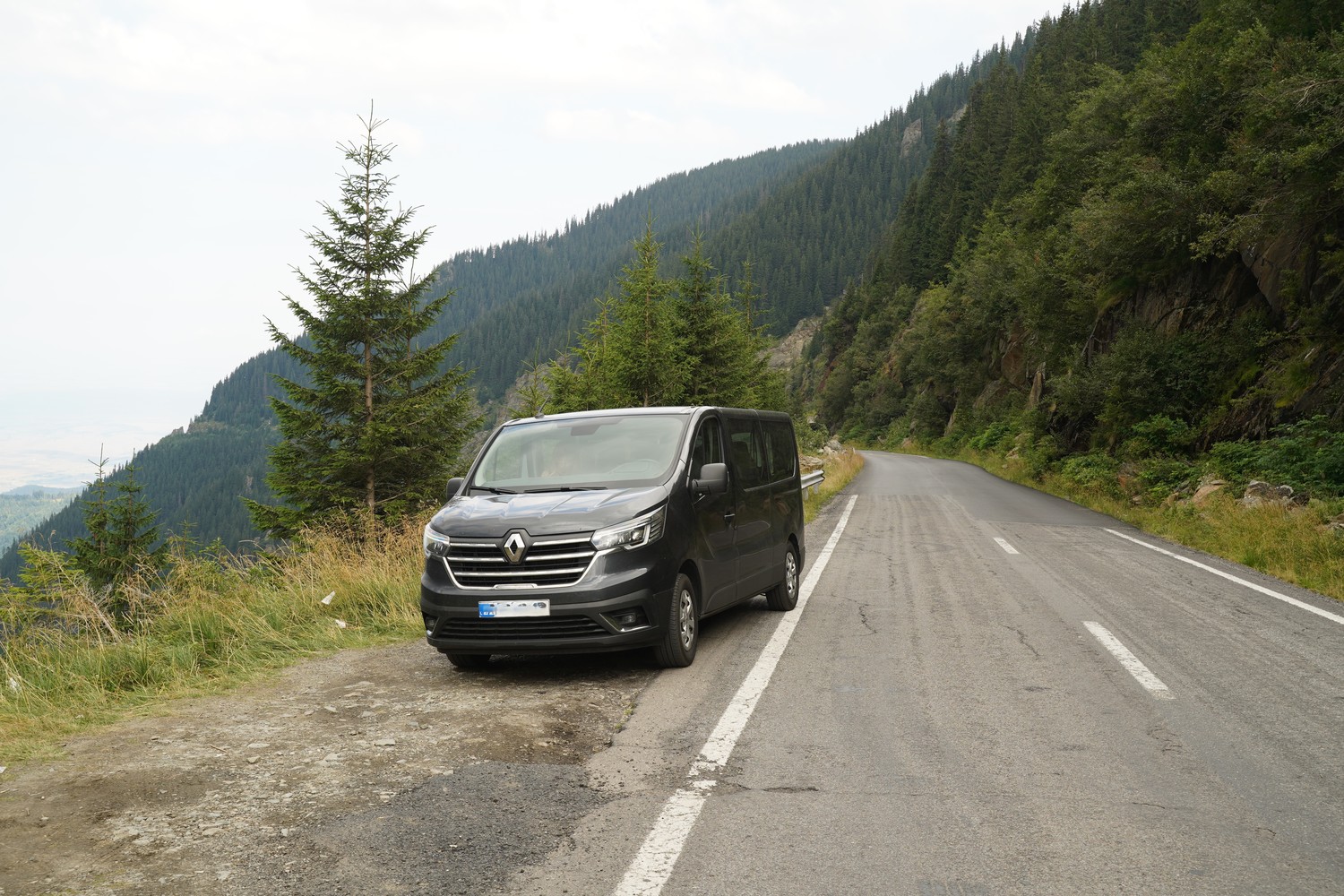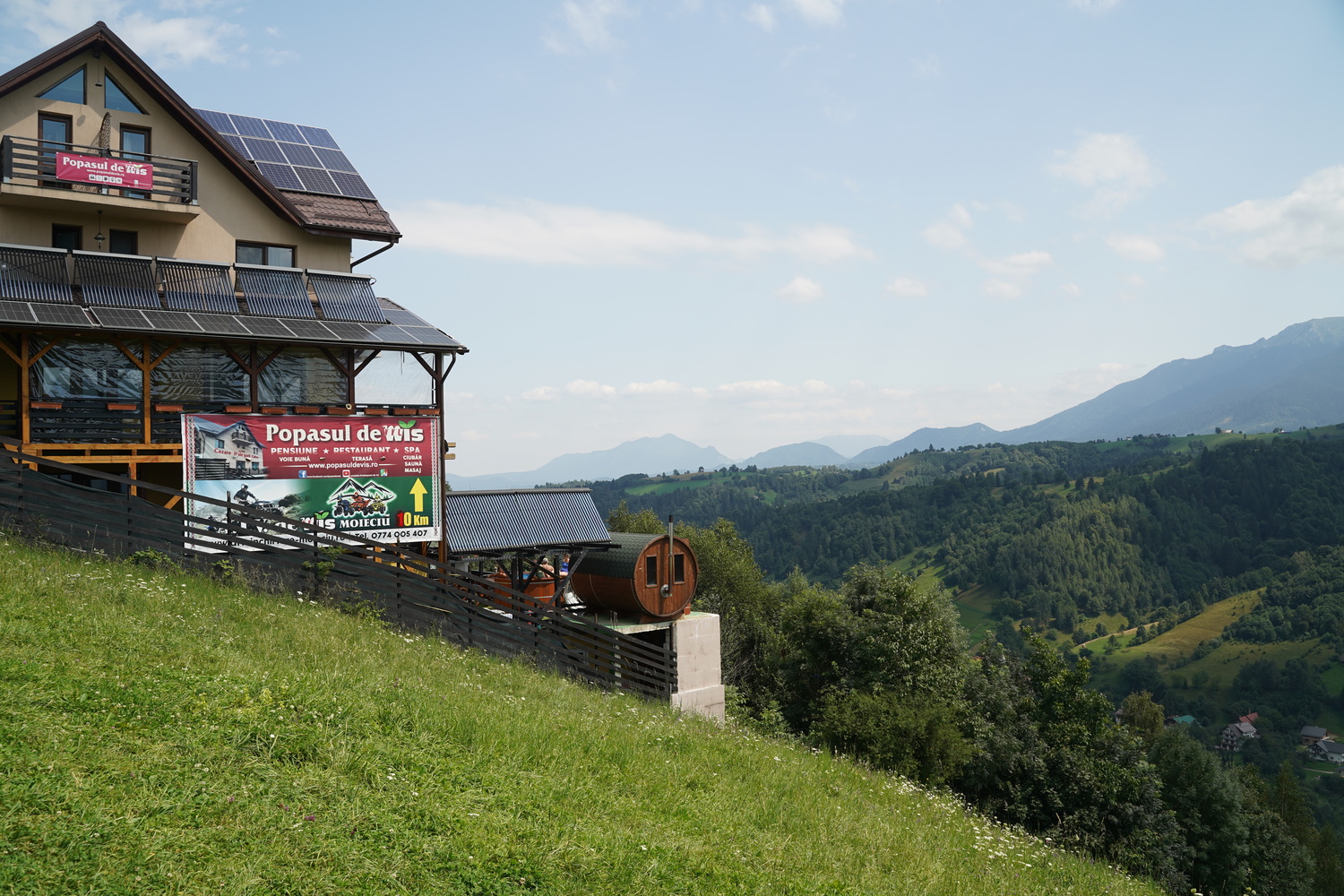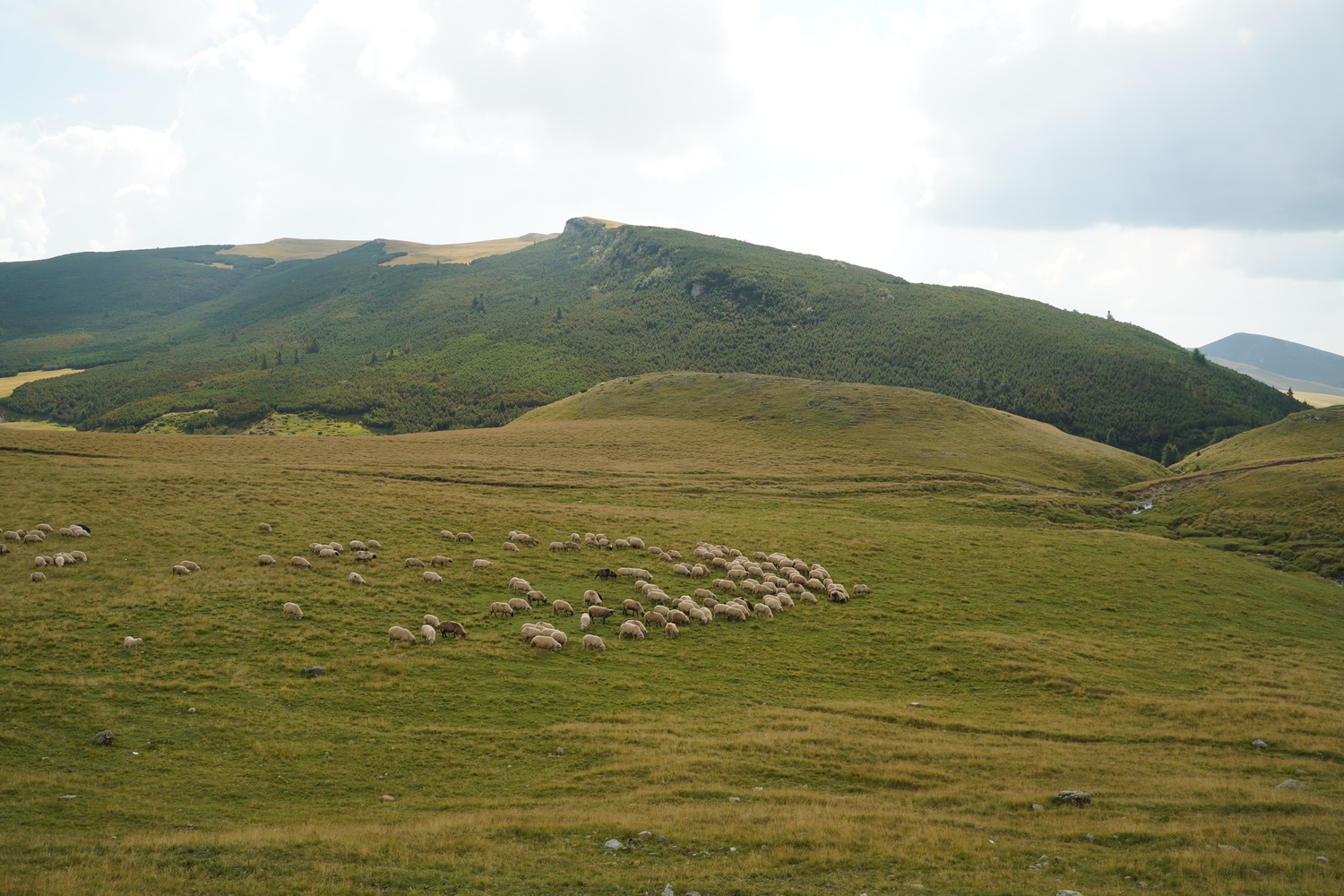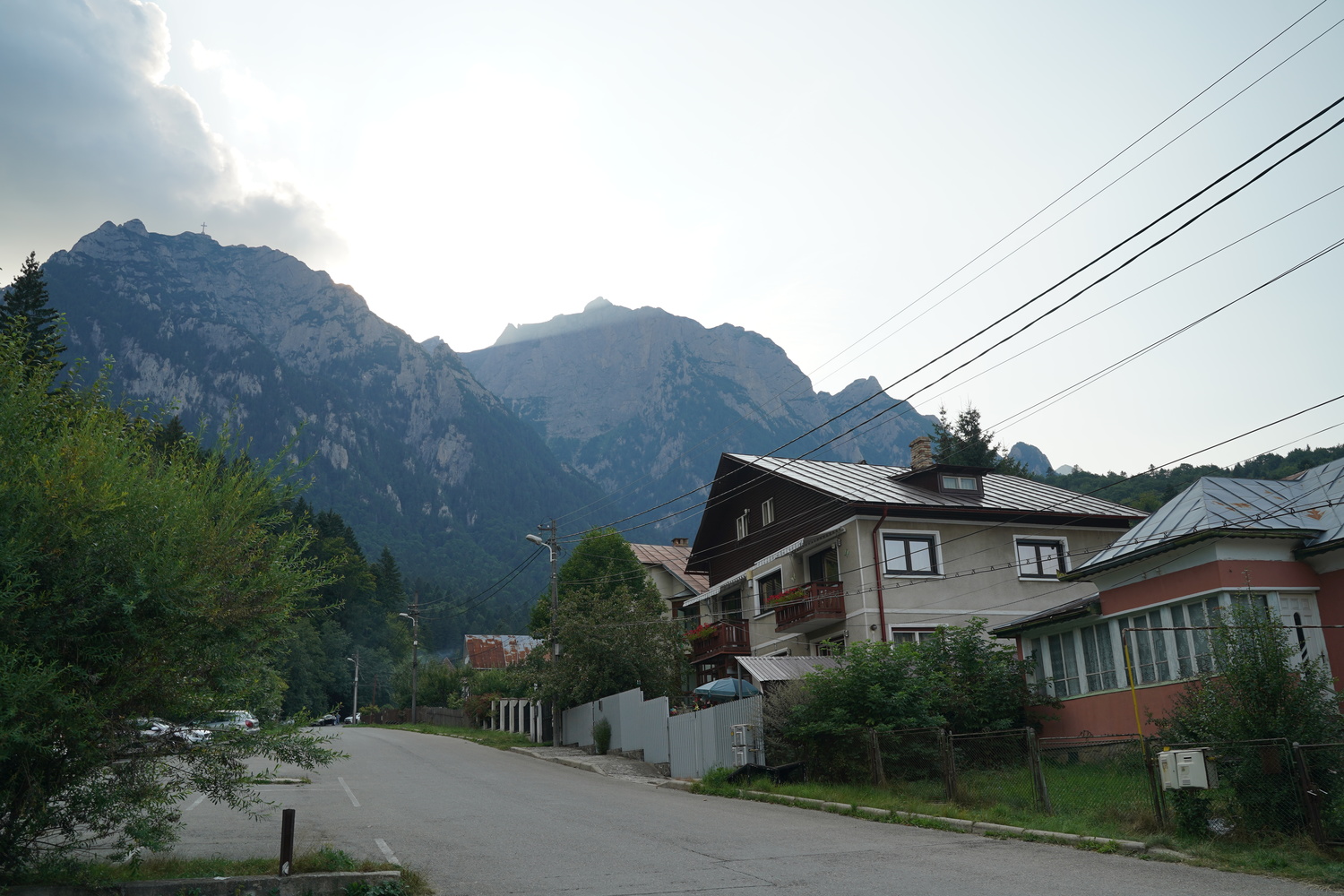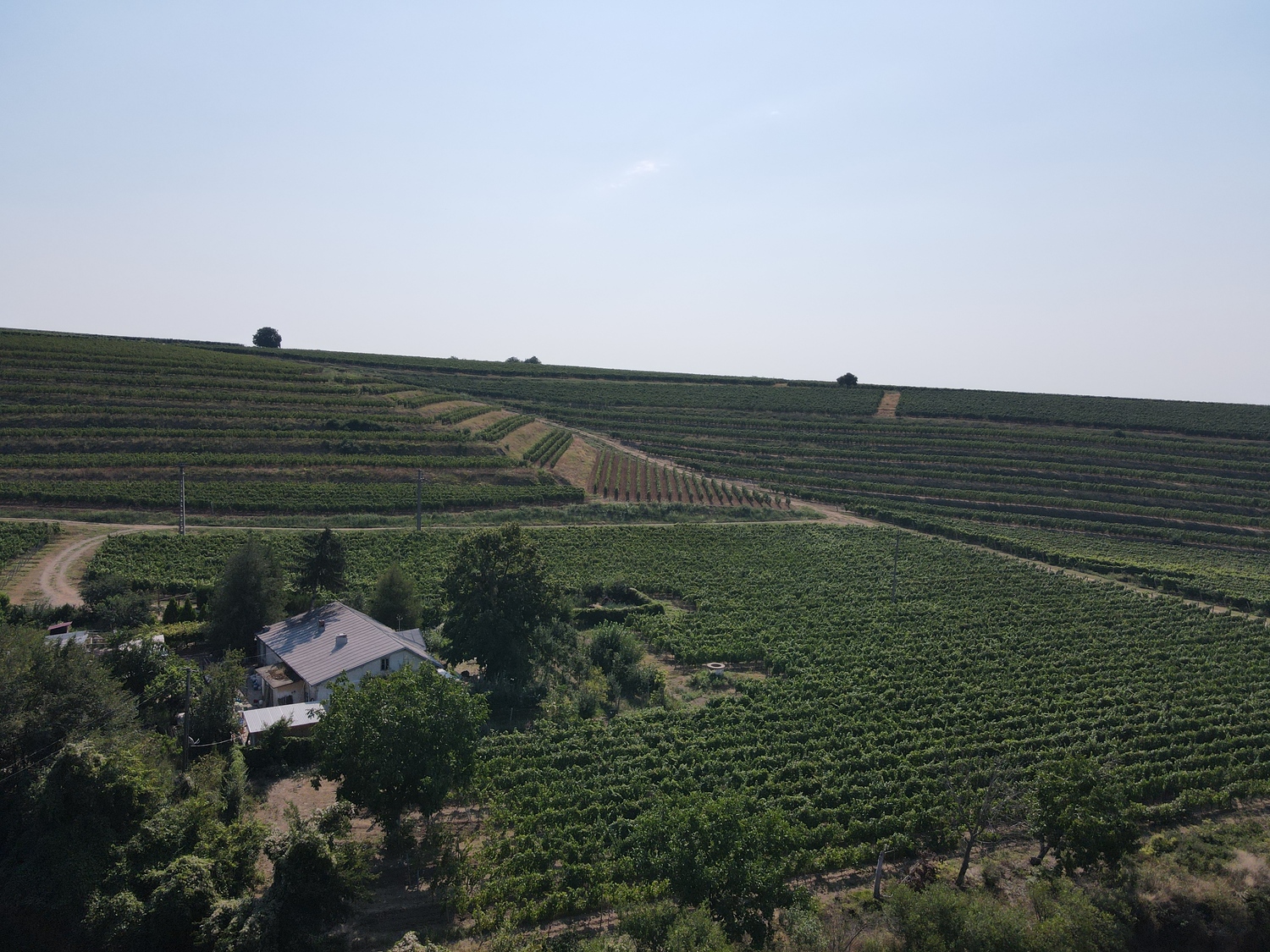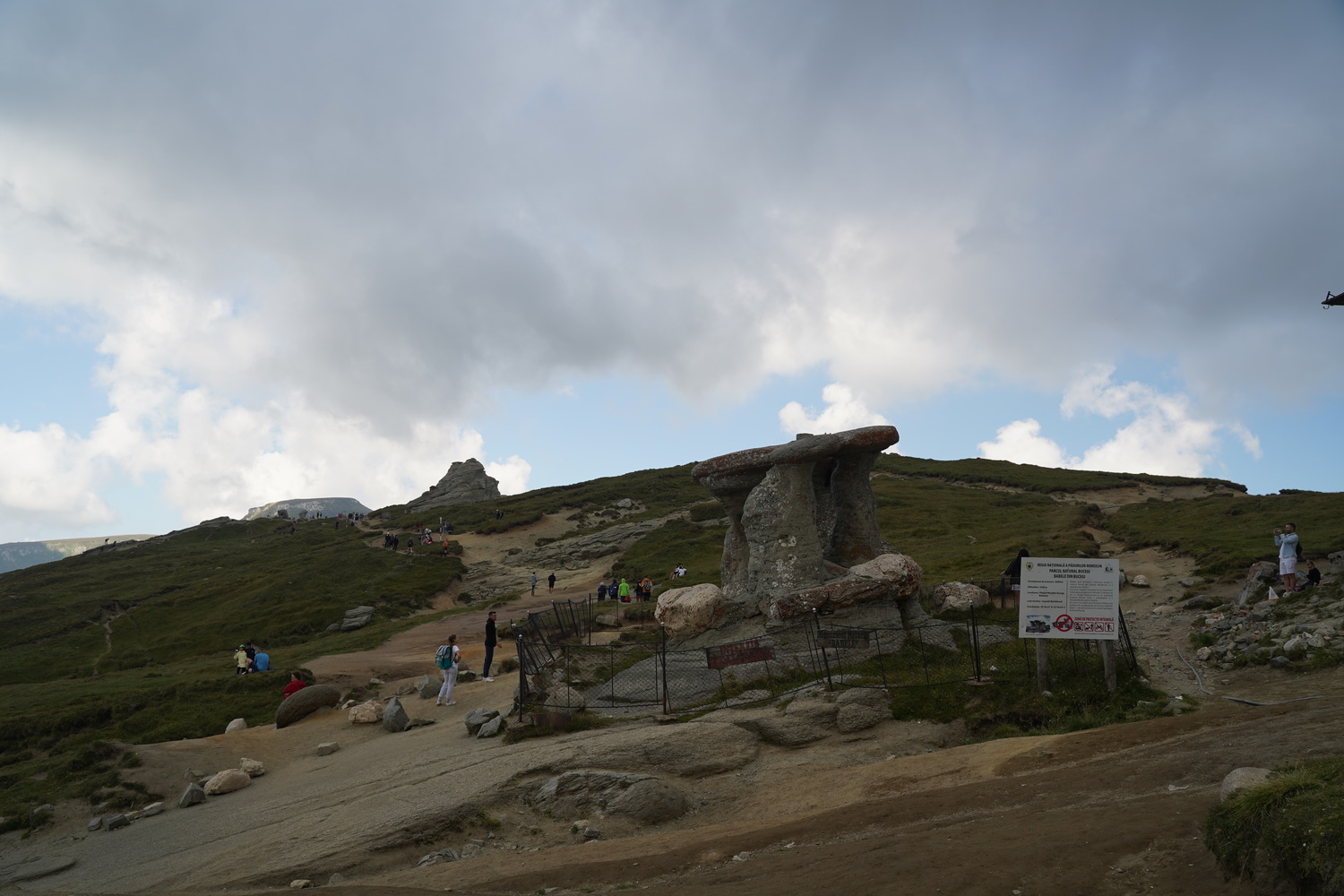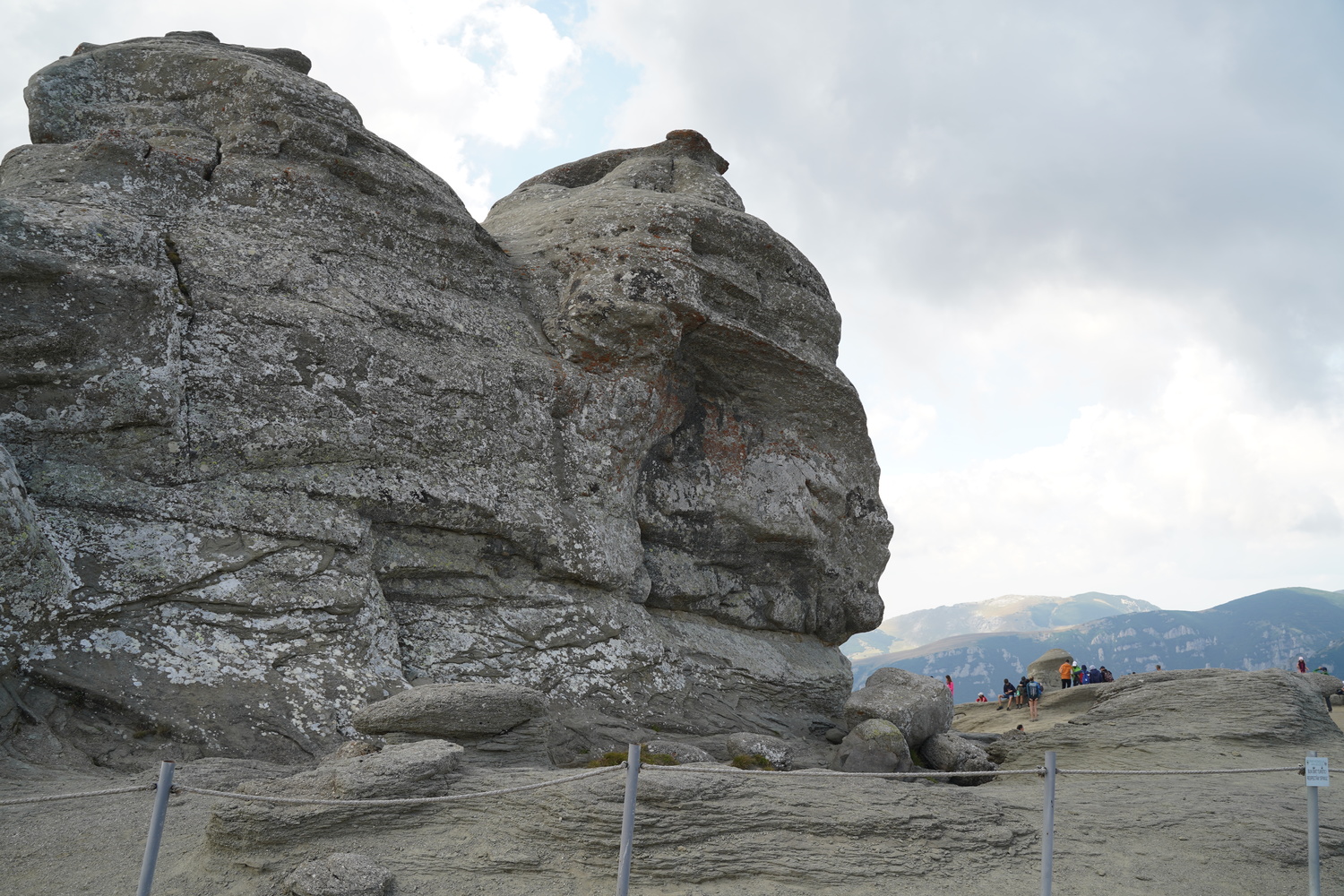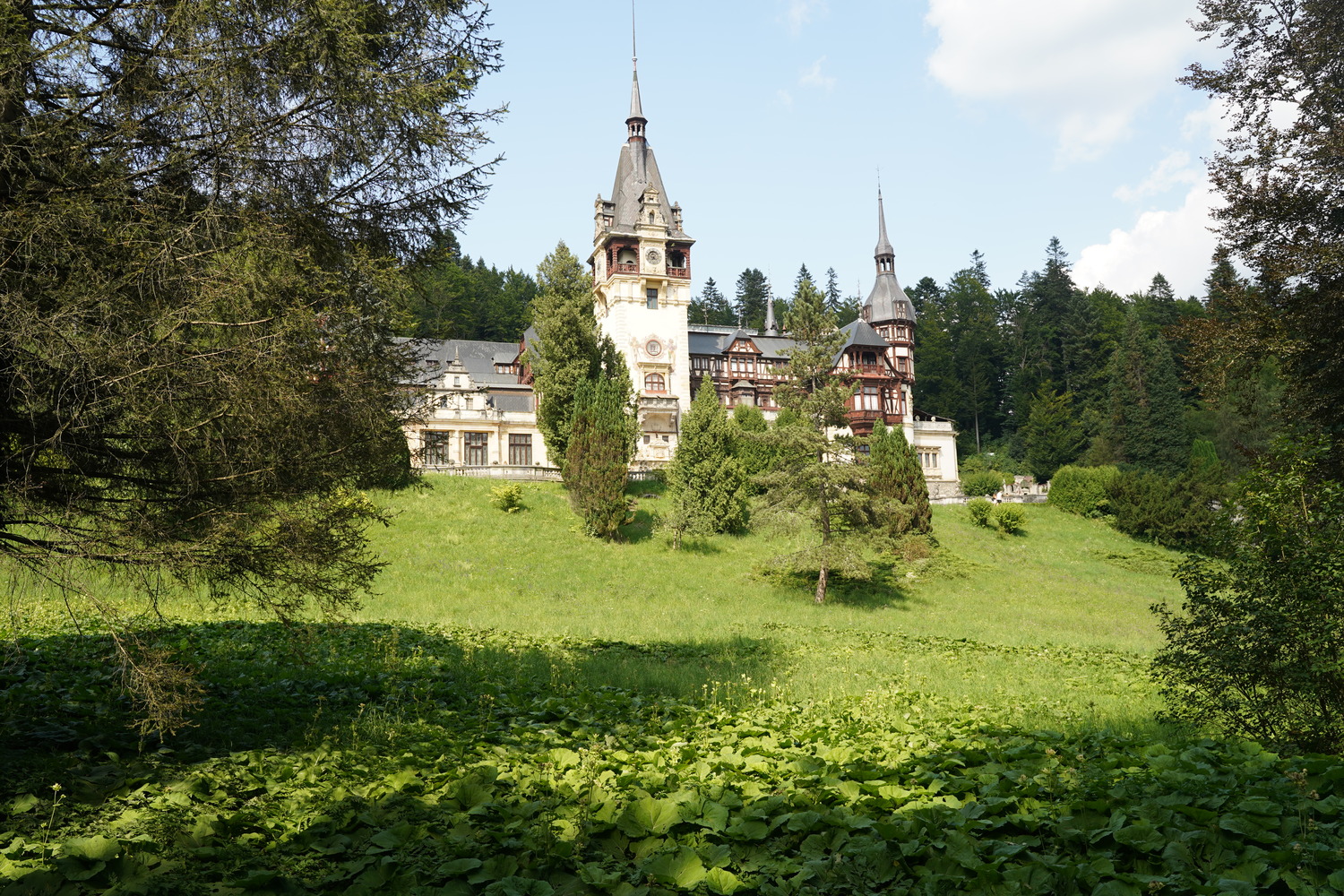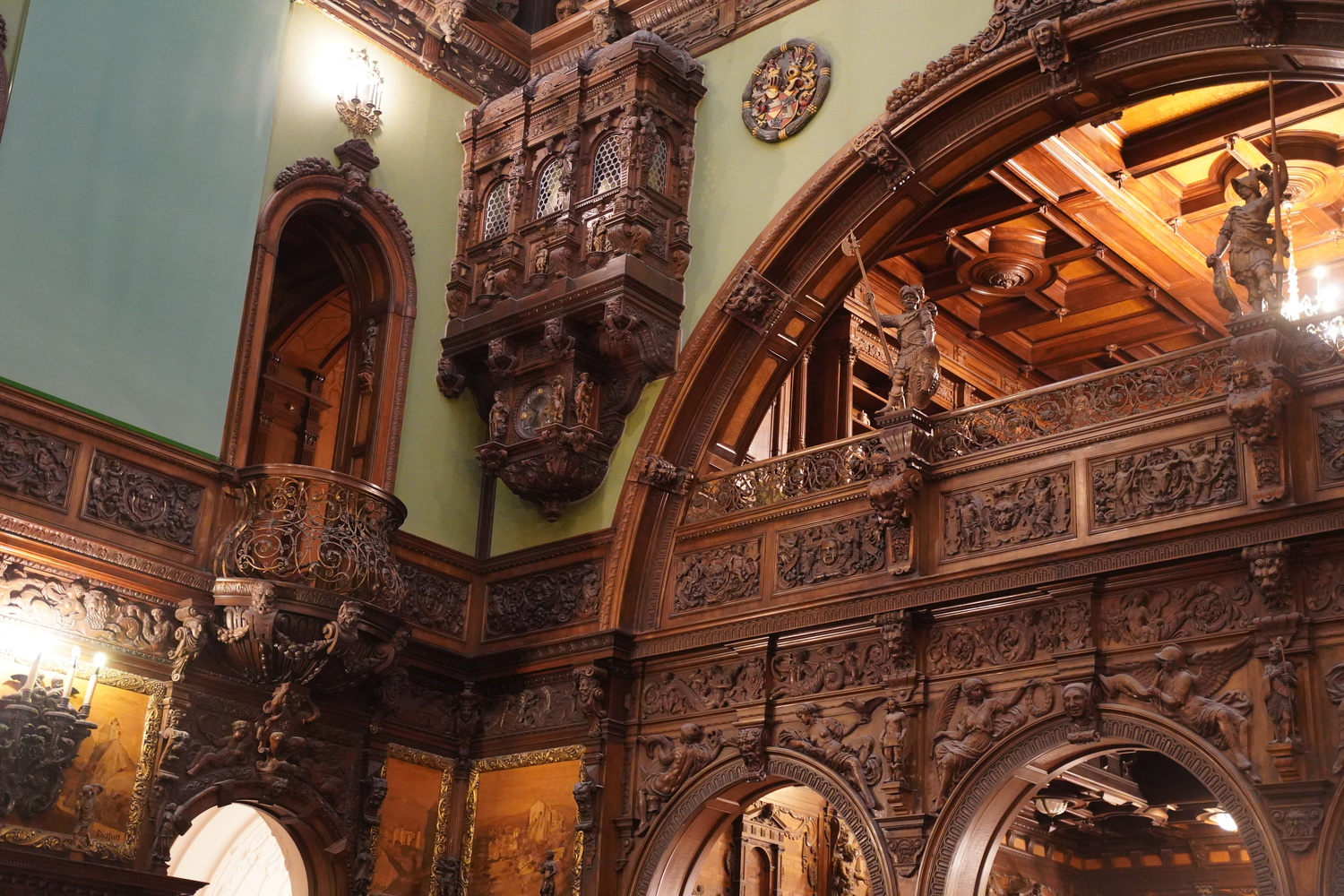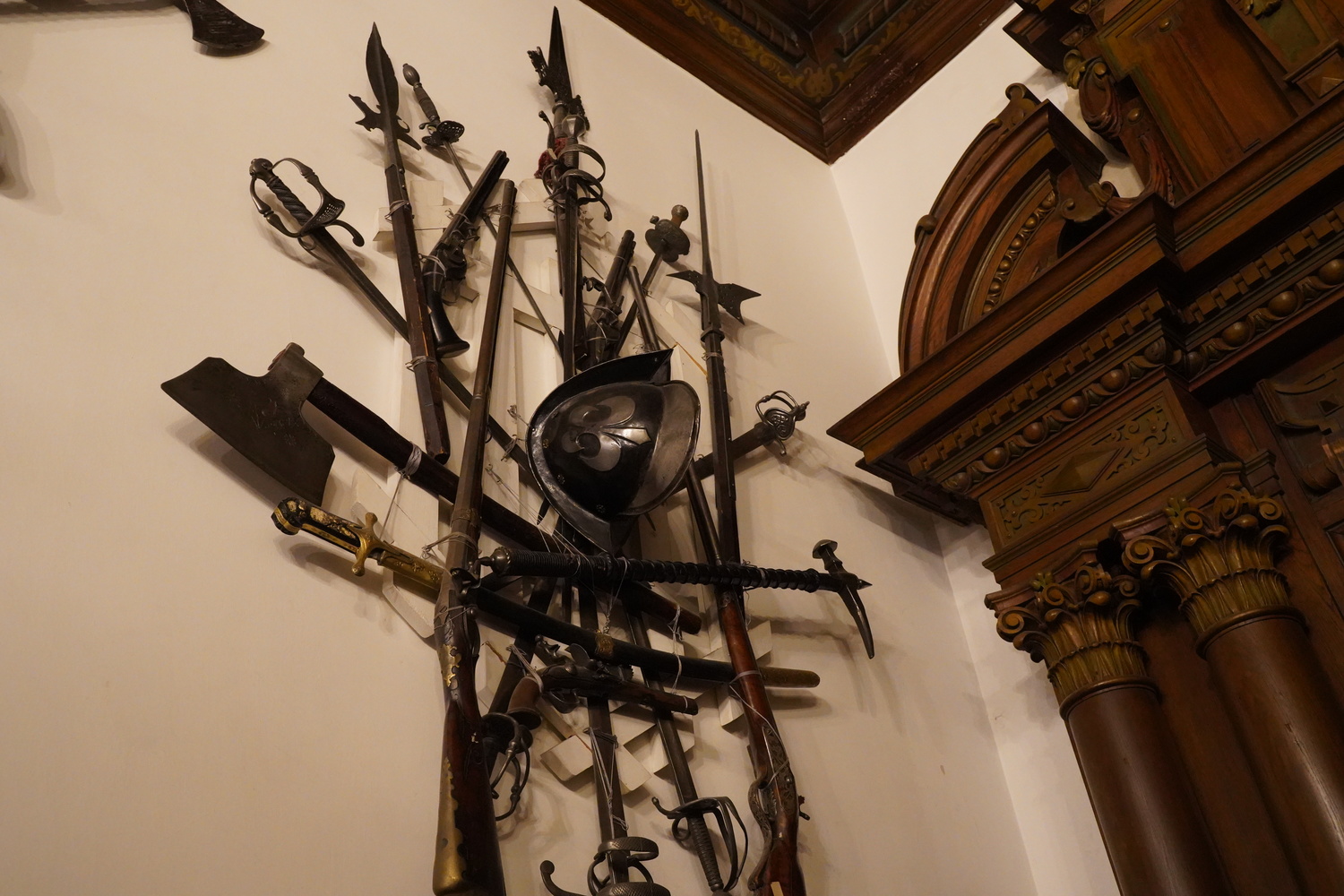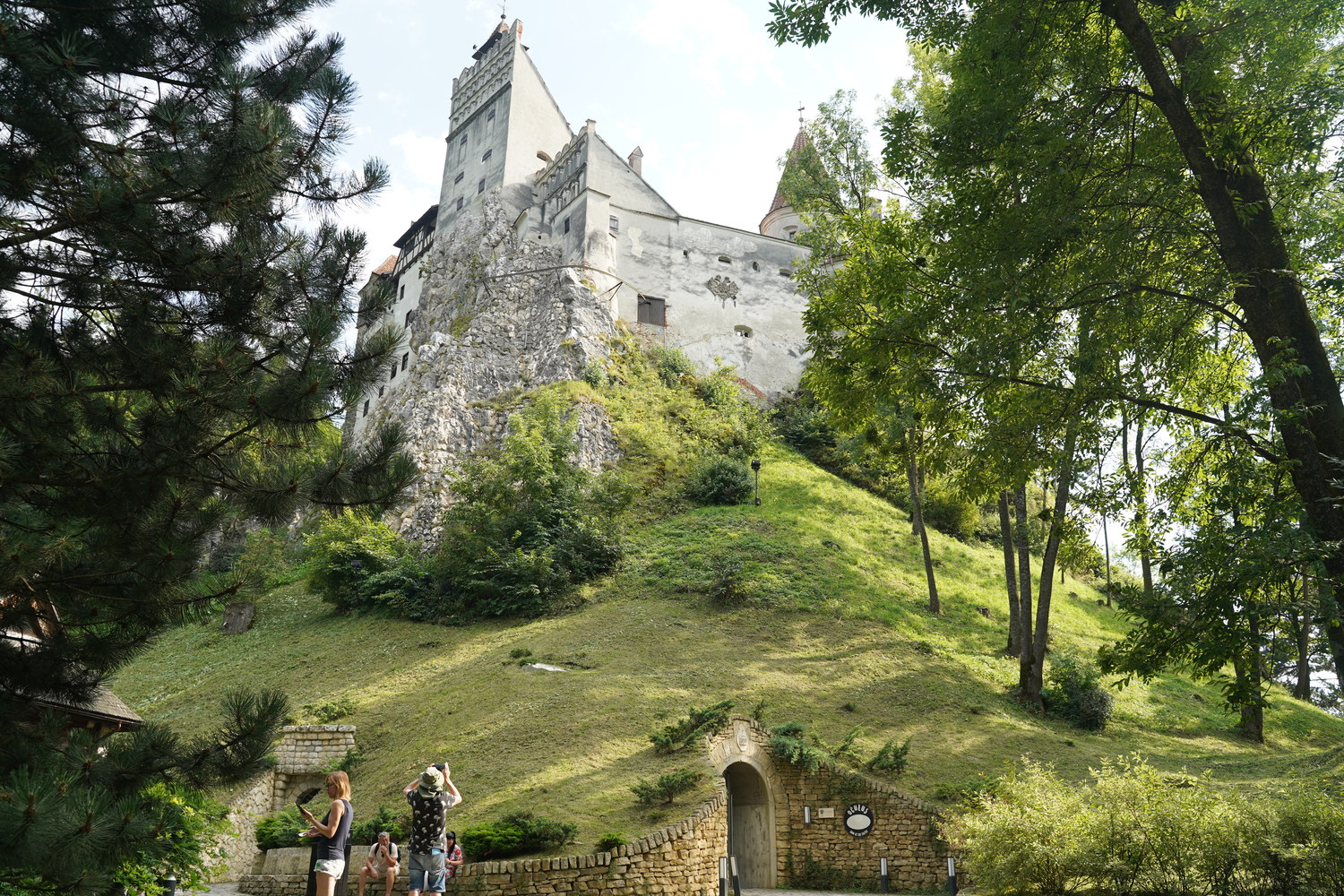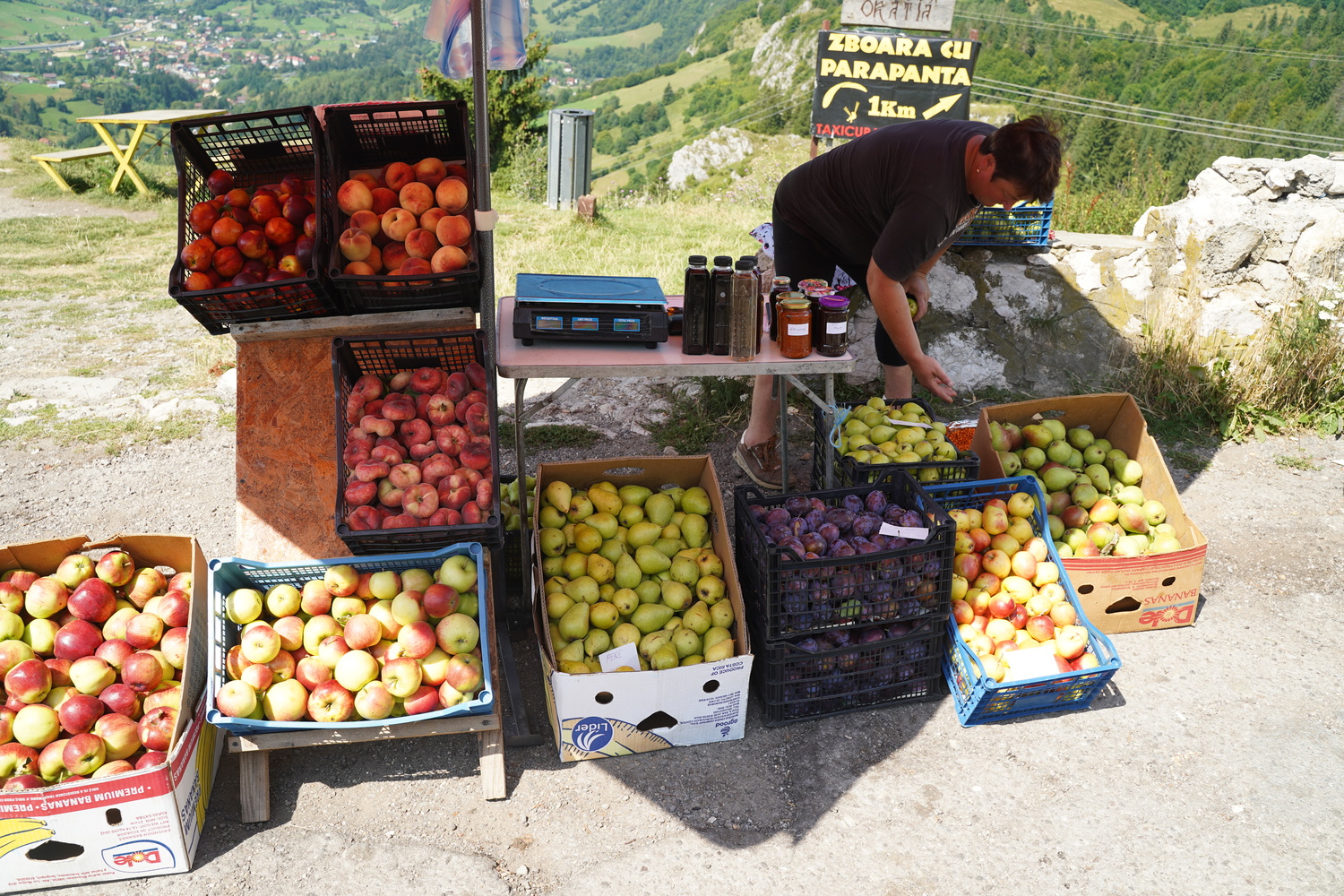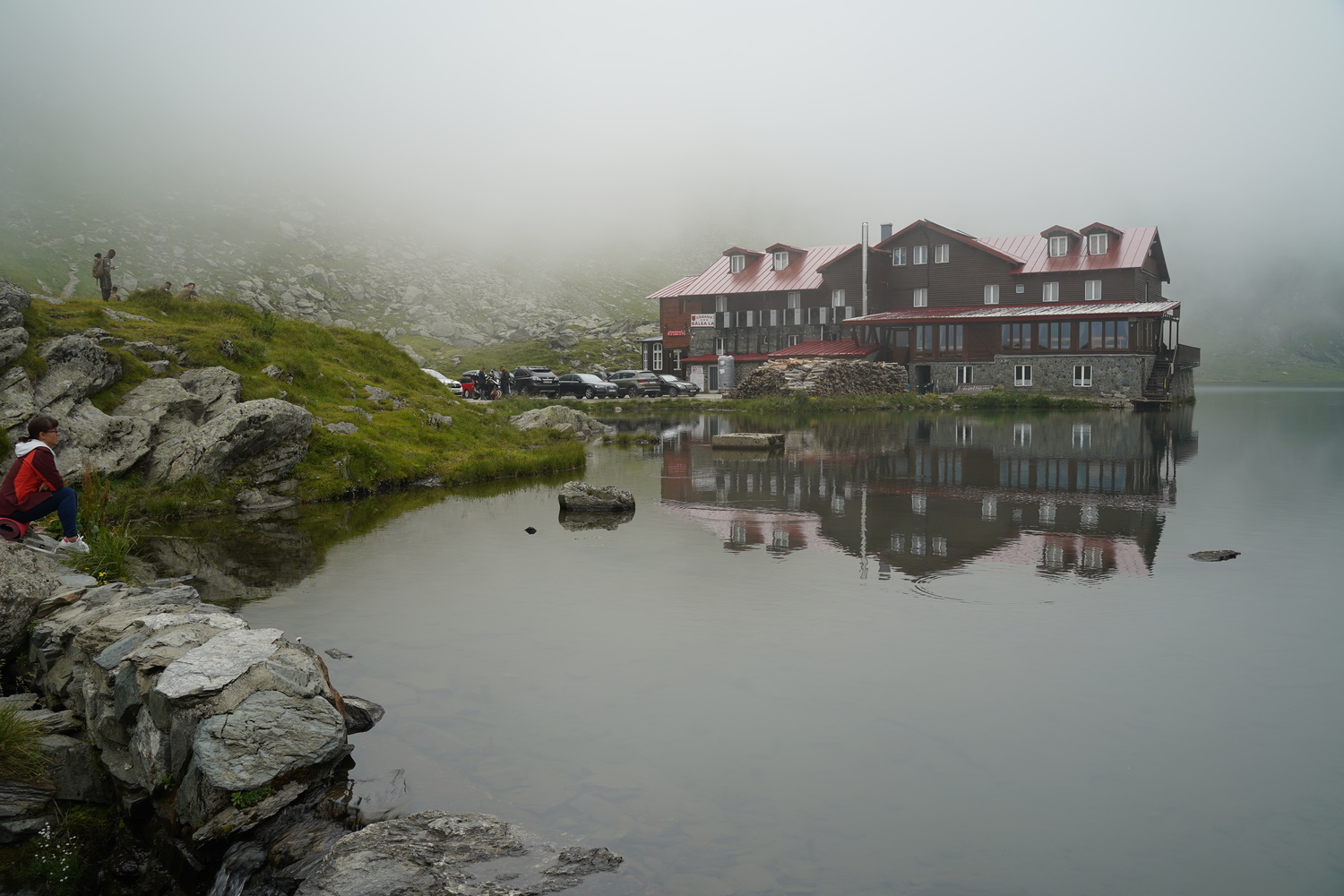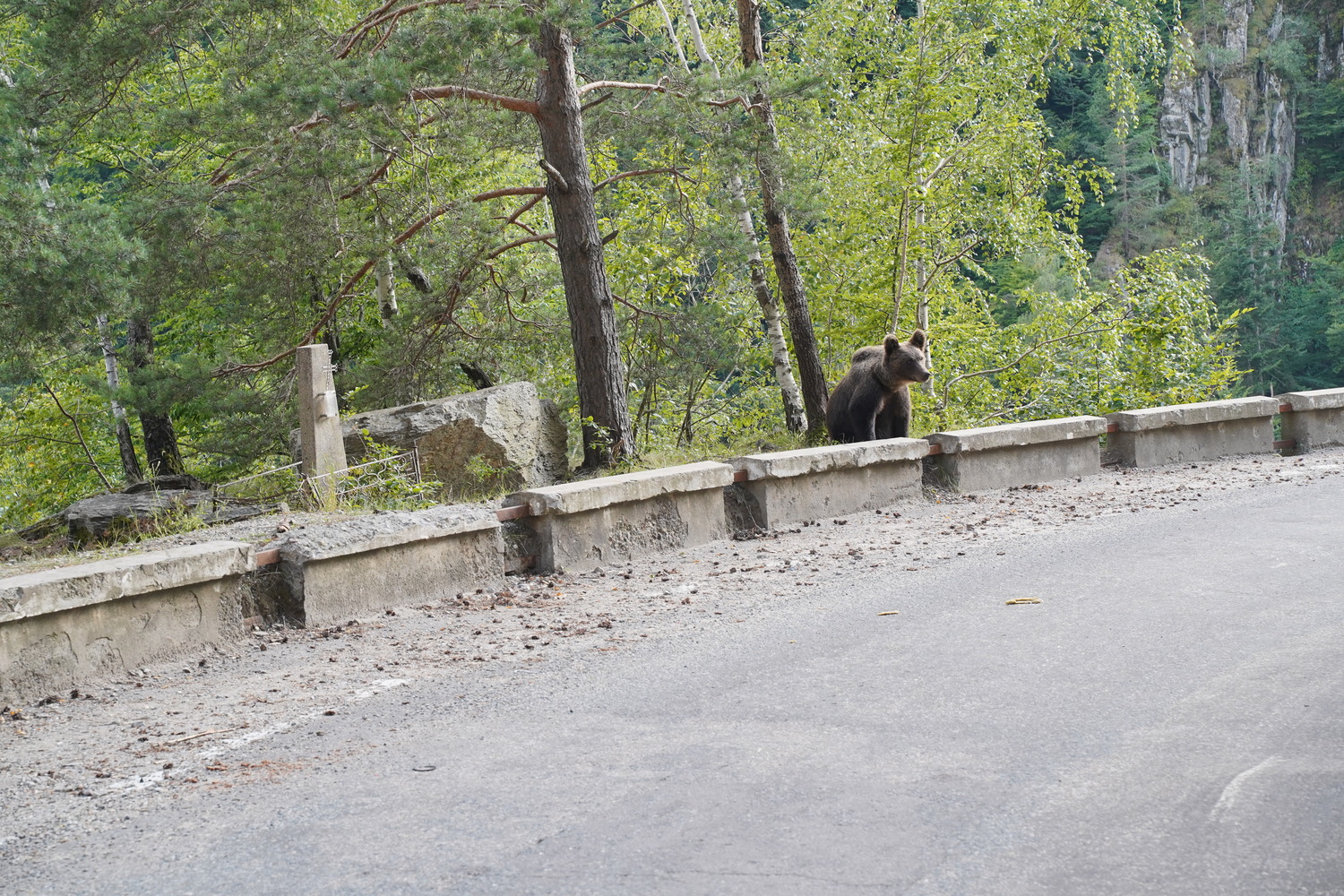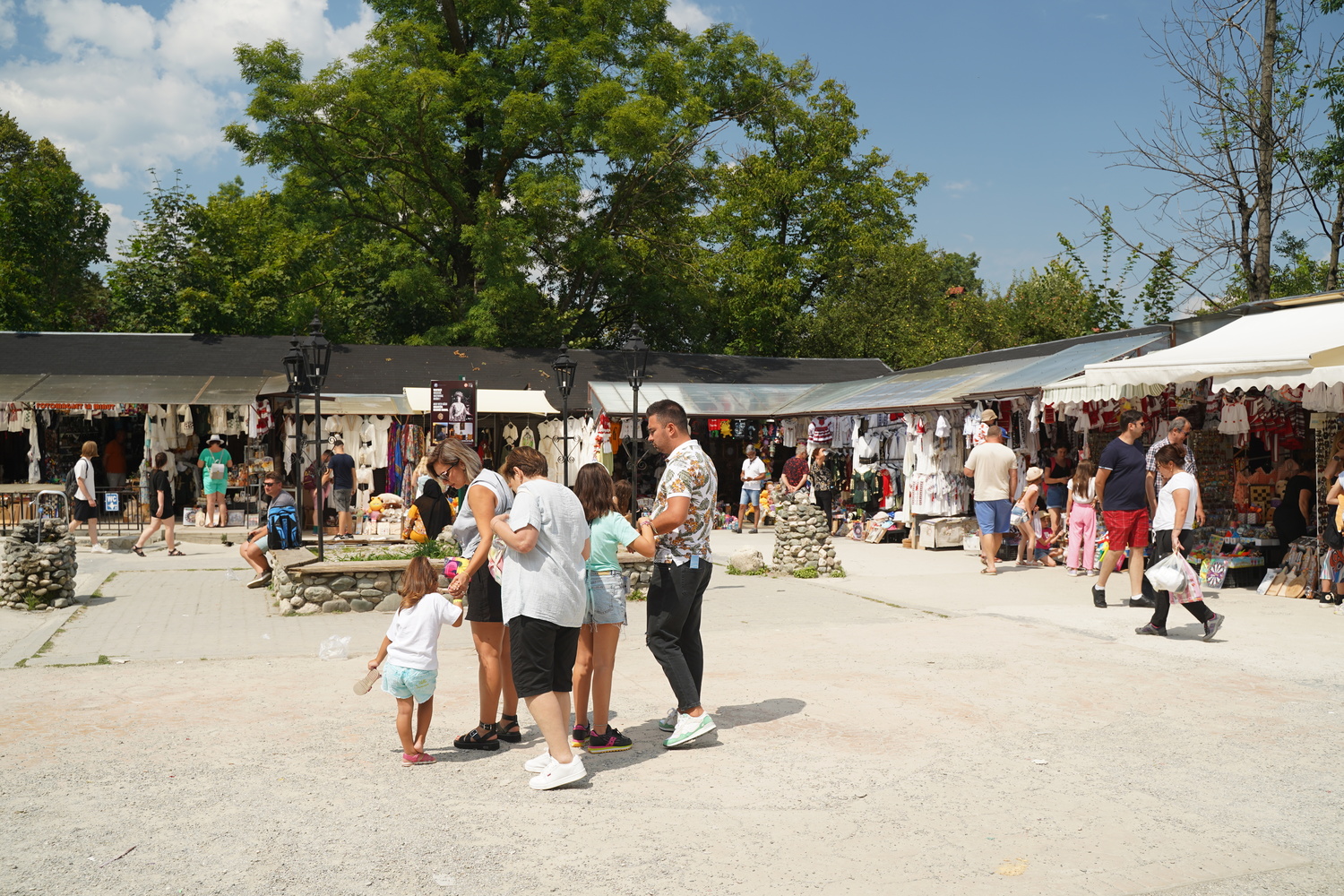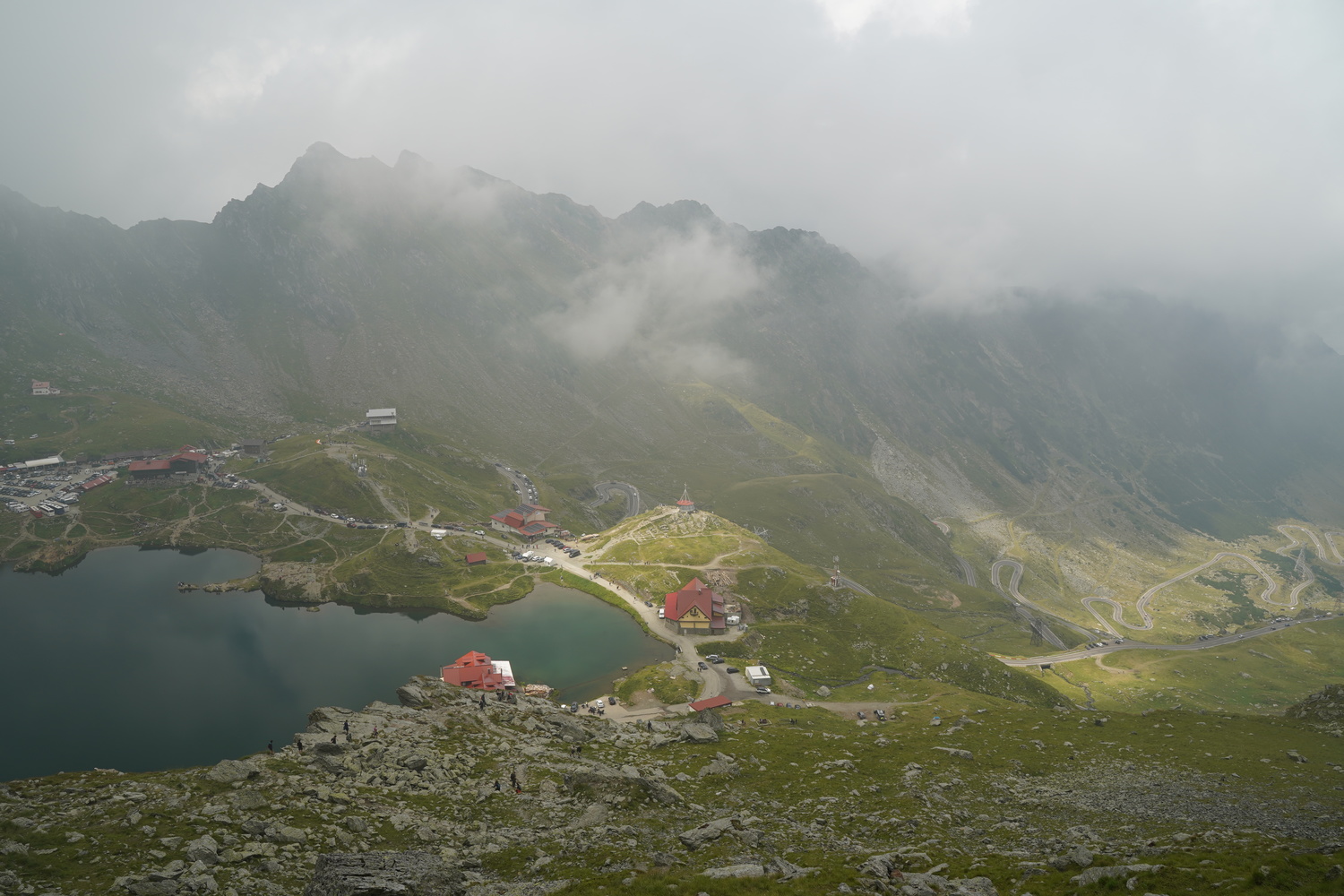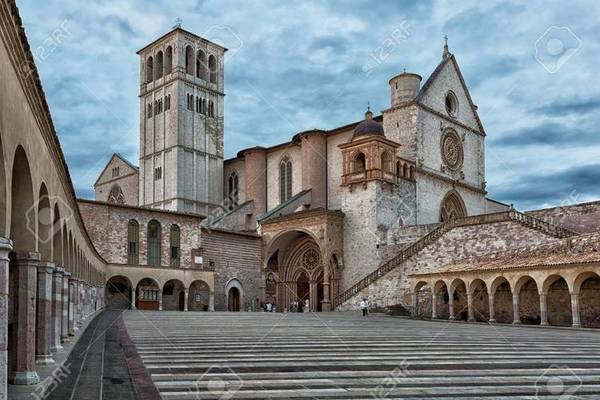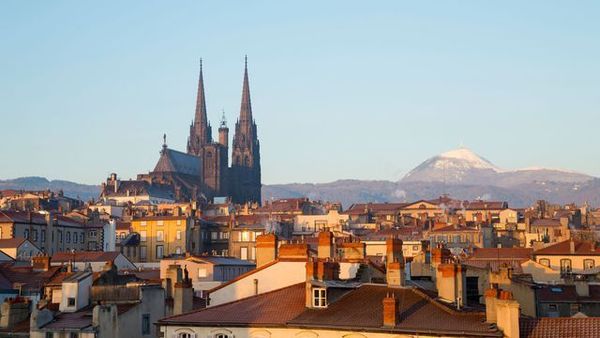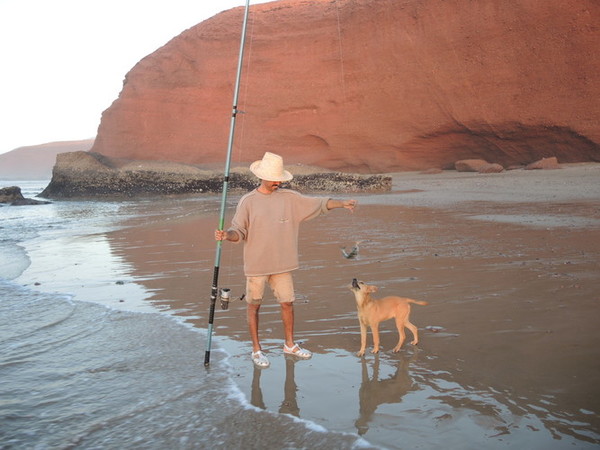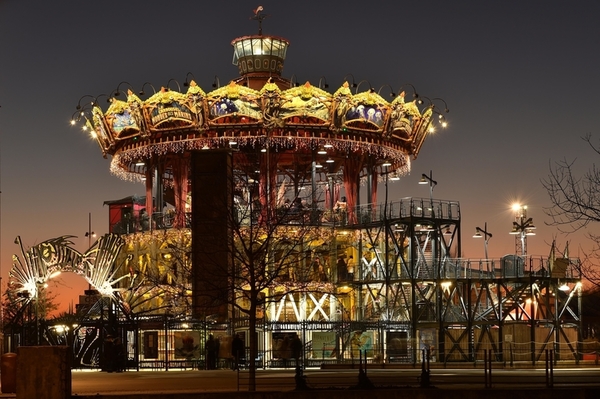Trips to Romania are often not included in most travel plans. For many travelers, Romania is a mysterious and unsafe country. Most associate Romania with Dracula and gypsies. However, Romania has recently become a highly developed destination for travelers. The country boasts well-maintained national parks with numerous hiking trails, restored castles, excellent roads, and public transport. The efforts of Romania to develop tourism have been appreciated by the locals, and today there are many travelers not only from neighboring countries but also from distant places like Germany and France.
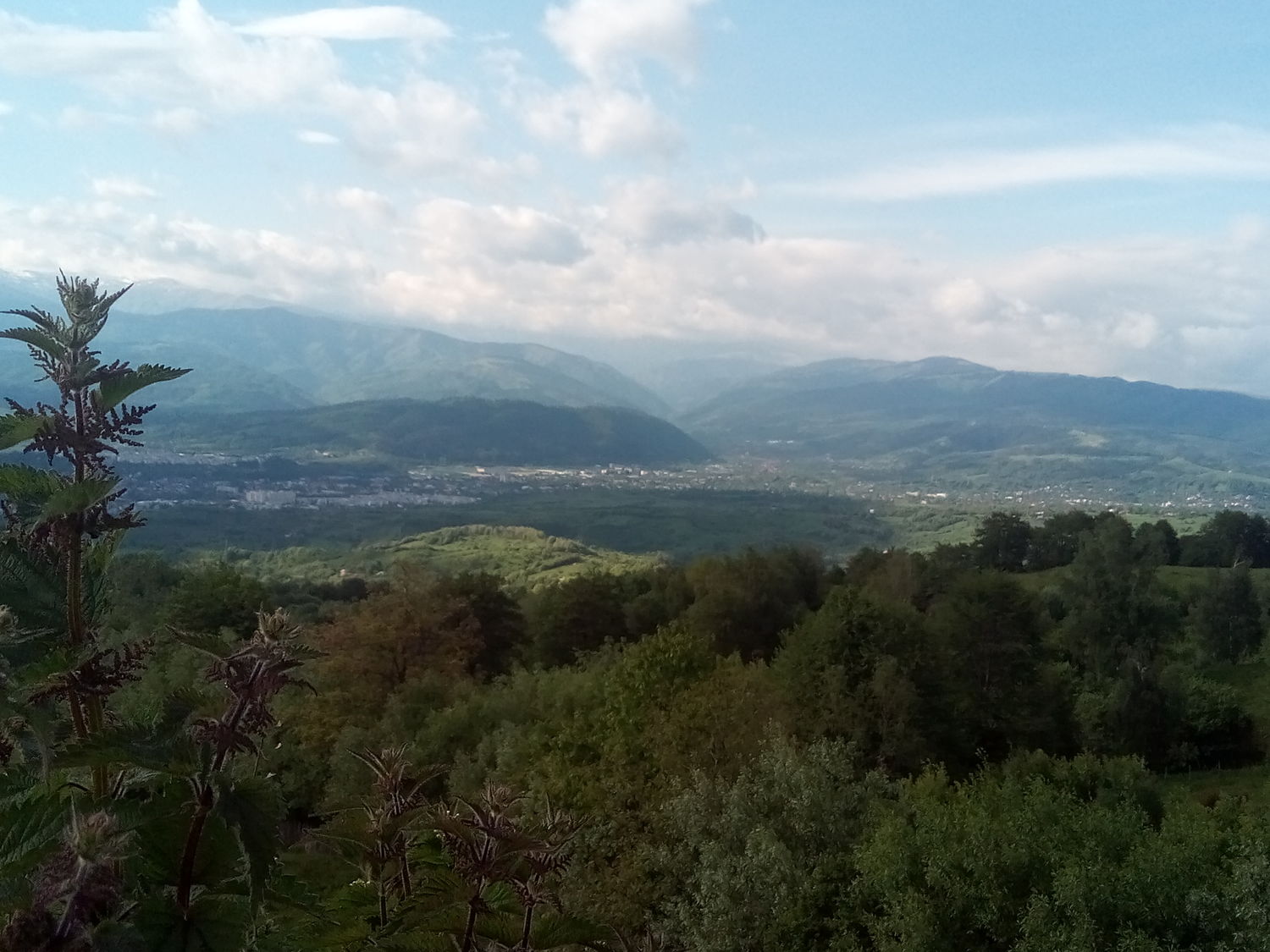
Most travelers are fascinated by Romania's nature and mountains. It can't be said that they are pristine or untouched, as many mountain travellers exist. However, order and cleanliness are maintained, and the mountains are naturally cared for by locals through traditional livestock farming and the preservation of traditional crafts. It's a blend of natural beauty and modernity.
Romania trip map. Recommended and useful places to visit. Hotels with the most beautiful views. You can copy it to your phone and use it during the trip.
How to Get to Romania
You can reach Romania by car from Hungary, with the first major city being Turda. There are several attractions in Turda itself. From there, travelers usually head through the Carpathian Mountains via the Transfagarasan road. On the southern side, national parks are visited, castles are explored, Bucharest is a stop, and the journey continues towards the sea. The return trip is made by crossing the Carpathians again via the equally beautiful Transalpina road.
It is also popular to fly to Bucharest, rent a car, and explore the most beautiful places in Romania.
Romania has a well-developed public transportation system, and many tourist attractions can be reached by train or bus.
We arrived in Romania via Hungary with a minibus. We rented the minibus from Litcarrent in Vilnius, and it was a one-year-old vehicle. This type of minibus consumes a small amount of fuel and is reliable. Traveling with a minibus lets you take plenty of comfort equipment and gear for camping. Also, on the way back home, you can bring a large quantity of excellent Romanian wine.
For trips, it’s best to rent an extended minibus. This type of minibus accommodates a lot of necessary and comfort equipment. In terms of size, the minibus fits into a regular car space. You can rent a minibus from LitCArrent. Click the safe, active link for passenger minibus rental.
Traveling to Romania from Lithuania is done through Poland and Hungary.
Hotels in Romania
Most hotels in Romania are small, family-run guesthouses. You can easily find accommodation using Booking.com. Throughout our trip, we booked hotels on the same day, either in the morning or afternoon, once we knew where we would stay. If you can't find a place on Booking.com or Airbnb.com, you can search for additional options. Many guesthouses are listed on Google Maps, and you can call to make a reservation. Even upon arriving in a town, you can find lodging by visiting guesthouses with a "Casare" sign.
Almost everywhere, we were welcomed by hospitable hosts with clean and well-maintained rooms offering all the necessary amenities. Many guesthouses have small kitchens and reliable Wi-Fi. For those planning a longer stay in one place, it’s worth choosing a hotel with a stunning view. We have marked such hotels on our travel map for easy reference. Among the most memorable places we stayed were Drumul Carului, near Bran Castle, and Rânca, along the Transalpina route.
Popasul de Wis Hotel in Drumul Carului offers breathtaking views on both sides. A double room costs around €60, while access to the sauna and a hot tub with a mountain view is around €100. It is not listed on Booking.com, so you’ll need to call directly. Contact details can be found on the map.
From our experience, campsites in Romania are usually small to medium-sized. We tried those located in National Parks. Medium-sized campsites typically provide electricity for each or several spots, and some even have water connections. They usually have separate buildings for toilets, kitchens, and showers. Smaller campsites often offer basic spots without electricity or water.
The most impressive campsite we visited was Plaiul Foii in Piatra Craiului National Park, which offered stunning mountain views. From here, you can explore hiking trails around the area or even cross the mountains.
You can try staying in free camping areas, as camping is allowed in most of Romania, except in National Parks. However, even in National Parks, we saw some tents pitched, particularly in Transfagarasan, near the tunnel in a stunning location, where campers seemed to have an agreement with the nearby hotel bar staff. We also spotted many wild camping spots along the Barsa River, offering breathtaking views of the Piatra Craiului Mountains.
Staying in a wild camping spot in Romania might bring some unexpected visitors. The country has managed to balance traditional rural life with modern tourism. In villages, you'll see plenty of domestic animals, including chickens, cattle, and sheep grazing in the mountains. However, if you choose to stay in a "Casare" (guesthouse) near a working farm, be prepared for strong rural scents, which might be unfamiliar or unpleasant for city dwellers.
Romanian Towns
There are many beautiful towns and villages in Romania. Upon arriving in Romania by plane to Bucharest, you can explore the city itself. The city is quite beautiful and tidy, but it’s not very impressive, especially compared to cities that have a medieval old town. On the way back, you can relax in Bucharest’s thermal baths, which feature a large botanical park.
For those interested in walking through cities with fascinating medieval architecture, it's worth visiting Transylvania's Brașov, Sighișoara, Sibiu, and Sebeș. We didn’t allocate time for the cities, although most of them were along our route. A lot of the architecture in these cities has German/Saxon influence, as Romania's rulers invited Saxons to settle here. Our time was limited, and we were mostly eager to visit the mountains. However, if you have time, visiting these cities should be worthwhile.
Even more interesting and unusual are the smaller towns of Romania. A church, a few streets lined with stone houses. Early in the morning, the roosters start crowing. Then the bells rang. In the morning, cattle are driven out and returned to the barns in the evening. Small, well-maintained town cemeteries. Delicious food at the local tavern. You feel like you're in the past, not just visually but also emotionally. We visited several towns like Cârțișoara, Săugag, and Bușteni. In all of them, we felt safe, even walking in the dark, not just in the center.
Especially picturesque mountain towns in Romania. They are usually built in mountain valleys, often near some kind of fortress.
Romanian Wines
It's worth making the first stop in the Dealu Mare wine region from Bucharest. It is located near the city of Ploiesti. The Dealu Mare region has low hills, protected from excessive rainfall by the Carpathian Mountains. The vineyards grow on the southern, eastern, and western slopes. Here, the native grape varieties feteasca alba (white) and feteasca neagra (red) are cultivated. Feteasca Alba white wines are highly aromatic and complex. Some compare them to Vermentino wines. Rare white grapes thrive so well in a hot climate.
Typical Dealu Mare vineyards. Not only indigenous grape varieties are grown, but wines made from them also win awards. In the valley between the hills, the temperature was a few degrees higher than when leaving it.
During this trip, we selected wineries that have won awards at wine championships. We visited Basilescu Winery, whose Feteasca Alba and Neagra won gold medals a few years ago. They were priced at 10 and 15 euros, respectively. Tastings are not held at this winery, as it is more of a factory and office. However, it offers excellent conditions for buying wonderful wine for the entire trip. In Romania, you can buy good wines in supermarkets like Auchan. However, it's unlikely you will find wine of such quality there. Sitting in the evening with a glass of exceptional wine and a mesmerizing view of the mountains is an incredible pleasure.
There are not many accommodations near the wineries, but they can be found. It’s best to search on Google Maps as they are not listed on Booking.com. It’s a good idea to look at areas where wineries are marked on the map. Hotel prices here tend to be a bit higher. Additionally, there are wineries where tastings are held.
National Parks in Romania
The most beautiful places in Romania are designated as National Parks. These parks not only preserve local traditional activities but are also fully adapted to travelers' needs. The primary activity for visitors is hiking along well-maintained trails. Parking areas, roadside inns, campsites, and many hotels in nearby villages are available, providing various types of accommodations and entertainment. The trails are designed with care, as if specialists have considered every step to ensure the most stunning views for visitors.
The closest national park to Bucharest is Bucegi National Park. If you leave early in the morning from the Dealu Mare region, you will have enough time to visit the plateau and its most famous landmarks. An impressive road, the Transbucegi Road, leads to the top.
Bucegi National Park is famous for its stone sculptures. Babele.
Sfinks in Bucegi National Park.
To the Bucegi Plateau, near Babele and the Sphinx, you can take several cable cars. There is a cable car from Busteni, which is quite expensive, and you may have to wait a long time. There is also a shorter cable car from the Pestera hotel area. Alternatively, you can hike from Busteni to Babele. If you don’t walk the numerous hiking trails, the Babele area takes about 3 hours to explore. If there are more participants, one can go to Bucegi by cable car, and others can descend on foot via the hiking trail. A good asphalt road leads to the parking lot, which is marked on the map. There are more accommodation options and hiking trails in the Bolboci Lake area. From there, you can descend from Babele.
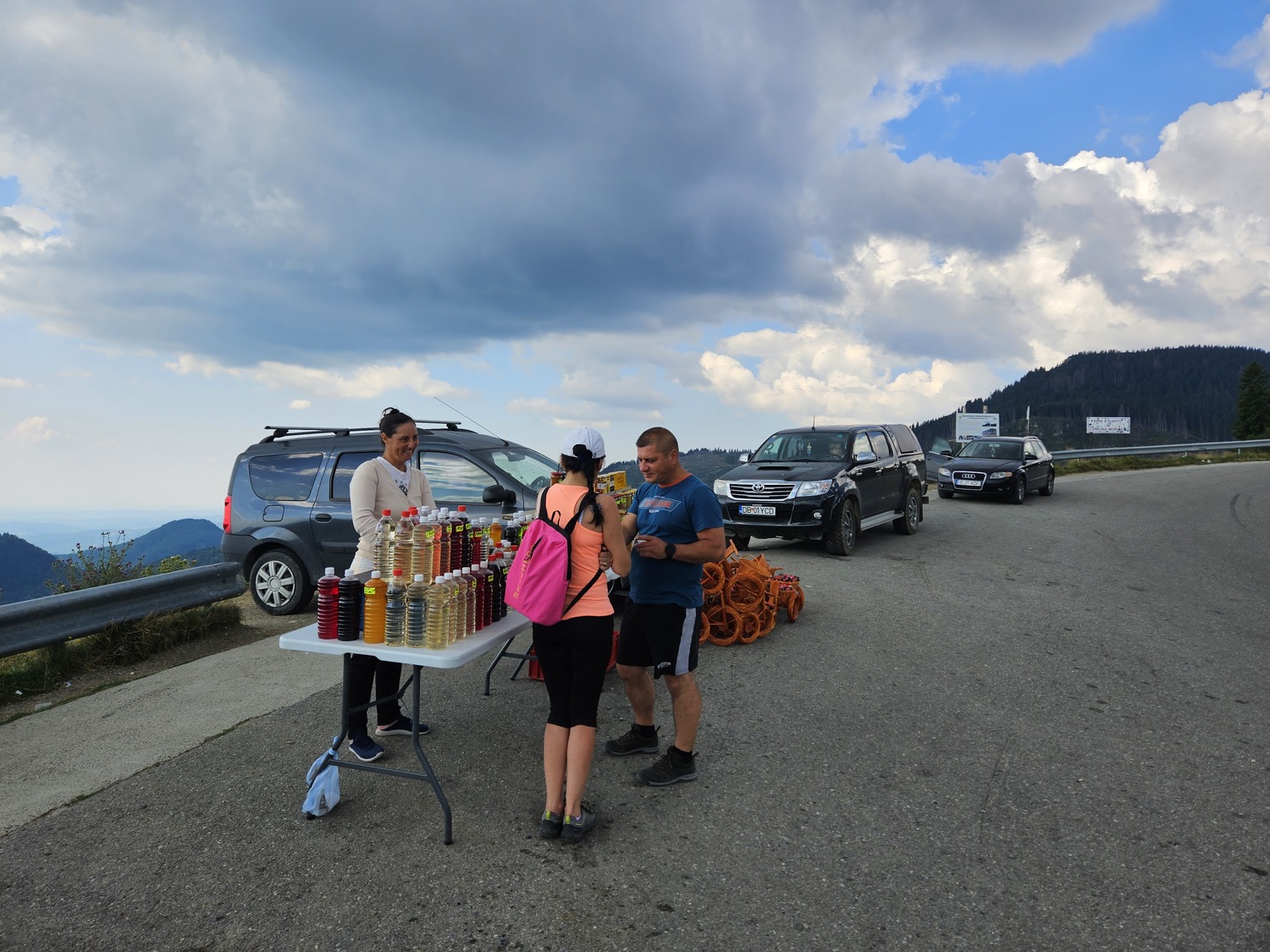
The Transbucegi road has several beautiful viewpoints. As usual, the viewpoints feature local businesses selling their products. It’s worth buying some brinza cheese and a local distillate.
The best place to stay overnight is in the town of Bușteni. If it’s not too late, it’s worth visiting Peleș Castle. Bușteni also has the Cantacuzino Entertainment Castle, where the movie Friday the 13th was filmed. Near Cantacuzino, you will find most hotels with beautiful views of the mountains. These can be found on the map.
Romanian Castles
Romania and Transylvania were attacked by various enemies for a long time. Almost every city has its own castle. However, the most famous castles in Romania, Peles and Bran, have a relatively modern appearance. Peles Castle was fully completed in the early 20th century. Bran Castle, often called Dracula’s Castle, gained its final appearance in the 19th century.
The highly impressive Peles Castle houses a luxurious collection of interior decor and weapons. You can easily spend around four hours exploring this site. The best time to visit is probably in the evening when the parking areas near the castle are less crowded.
Peles Castle located near Bucegi. It served as the summer residence of the Romanian rulers.
Peles Castle boasts a very rich collection of interior wood carvings and other decorative elements. It also houses an exceptionally extensive collection of medieval and Renaissance weapons.
Râșnov and Brașov castles are also impressive in these areas. However, the most famous is Bran Castle. Although Bran Castle is often called Dracula’s Castle, its walls hold little real connection to him. Vlad the Impaler, the historical figure behind the Dracula legend, spent much more time in the now-abandoned Poenari Castle.
Bran Castle will take about 3–4 hours to visit. The parking area is about 400 meters away.
Bran Castle, a fortress of Romanian rulers, is located in a stunning setting. It attracts many visitors, has an entrance fee, and features several additional exhibitions. A particularly interesting one showcases medieval torture instruments, and there is also a tunnel with an elevator leading from the castle to the lower courtyard.
Bran Castle is a bit off to the side from Piatra Craiului Park. It's worth visiting after your stop there, continuing towards the Transfagarasan Road. Keep in mind that near the town of Bușteni, many roads converge, and the traffic flow can be quite slow, so what seems like a short distance could take a long time. Therefore, it's better to avoid visiting on weekends when many Bucharest residents arrive or depart.
Hiking Trails in Romania
Hiking trails in Romania are the goal for many travelers. They are located in the vast National Parks of Romania. During the season, on beautiful days, these trails are as crowded as the city center in the evening. Even the hikers’ attire is often quite festive. However, there are many trails, vast spaces, and the large number of hikers doesn’t feel overwhelming. The natural around are in excellent condition, with no litter, and you don't feel like you're in a city ant colony. During the off-season, it should be quieter.
The hiking trails vary in difficulty. You will often encounter seniors and mothers with young children. Although it's recommended to walk in comfortable mountain boots, all the trails are marked, and it would be difficult to get lost.
There are also more challenging routes that may require ropes and other mountain equipment. These are marked.
One of the most beautiful places is in the Curmatura area of the Piatra Craiului Park. You can reach it by car to the Botorog spring, from where most of the trails begin. These trails vary in difficulty and eventually converge at the Curmatura guesthouse. There is a small restaurant, a hotel, and a camping area. From here, more challenging routes begin across the mountain ridge, or a gentler route for seniors takes you through a stunning gorge. Between the peaks of Turnu and Piatra Mica, there is a saddle that our unprepared group passed through. One member descended to the parking lot and went to the campsite. After regrouping, the group was collected near the Barsa River.
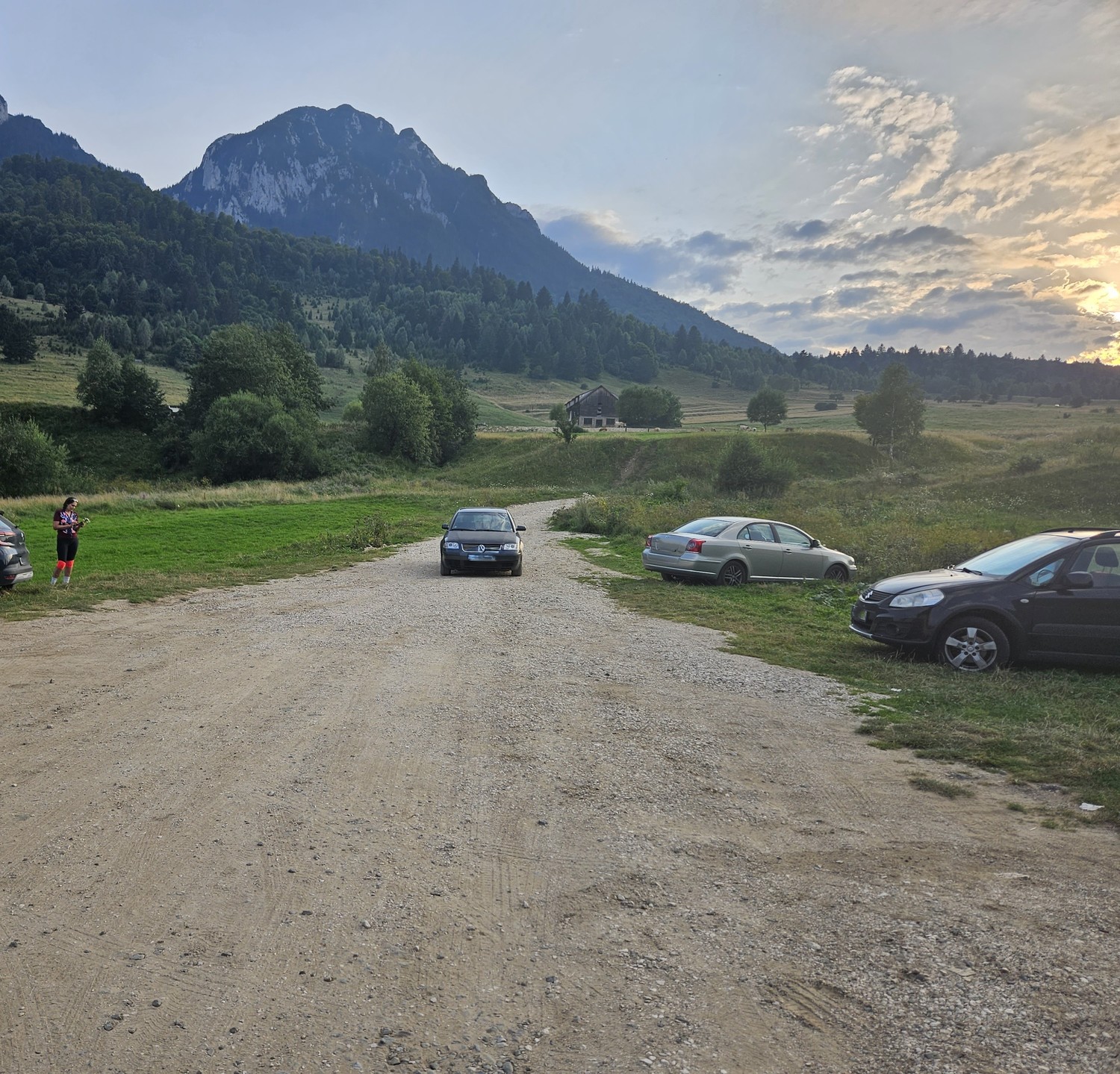
The saddle is further ahead, above the Curmatura guesthouse. Not always the most beautiful views are from the peaks. Very often, the most stunning views are halfway up.
There are many campsites, guesthouses, and inns near the Barsa River. Travelers often stay here for a few days or even a week. It is also popular among the locals to come here. There are many different hiking trails.
The Most Beautiful Roads in Romania
The roads in Romania are good. Even in the countryside or rural areas, the asphalted roads are quite good. In most cases, the roads pass through small towns, and the traffic is not too fast. Some highways allow you to reach your destination quickly. For example, you can travel through the Carpathians in 10 hours or bypass them through Brașov in 4 hours.
A trip through the mountains is a must-do part of a journey through Romania. There are two most beautiful roads: Transfagarasan and Transalpina. Although other roads are also captivating with their beauty. After a hike in Piatra Craiului National Park, the next goal is the Transfagarasan road. To reach it, you take the 73/73c route. The most beautiful spots are around Drumul Carului. This wave of hills offers views of the main Carpathian mountain ridge. On the other side, you can see the Bucegi Mountains. I would recommend finding a hotel here, and I've marked some of the roads with the best views on the map. Unfortunately, there are not many hotels on Booking.com, so it's better to call directly. One of the hotels in the Drumul Carului area can be found by clicking on the safe, active link. It's best to stay as close as possible to the ascent to Transfagarasan for the night.
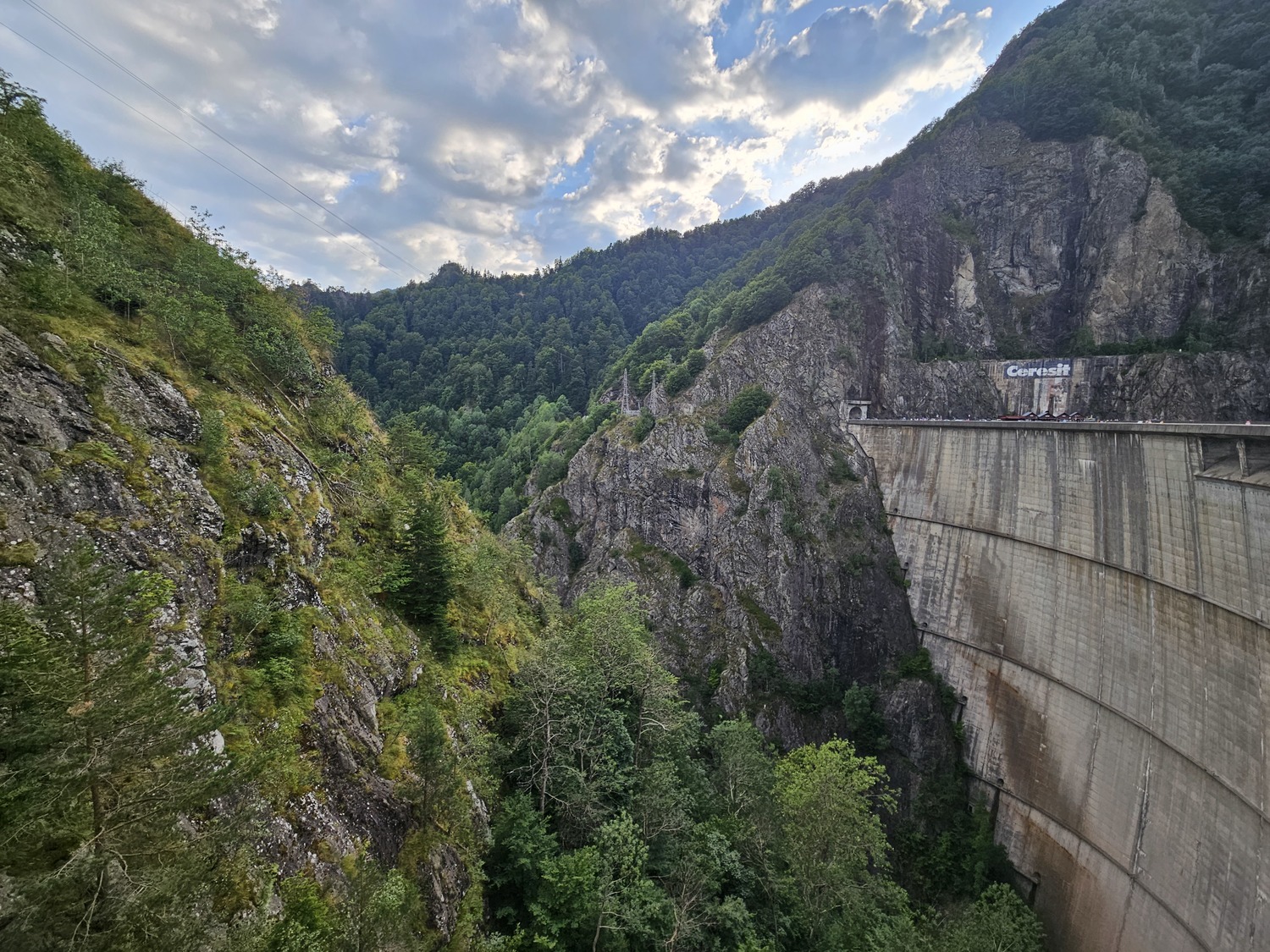
Vidraru Dam on the Transfagarasan road. From here, the bear zone begins.
The Transfagarasan road rises sharply and then descends just as steeply. At the summit, there is a tunnel. After the tunnel, there's a large parking area and an entertainment zone. Here, you can find souvenir shops, restaurants, and a few hotels. Additionally, from here, numerous hiking trails lead through the surrounding mountains.
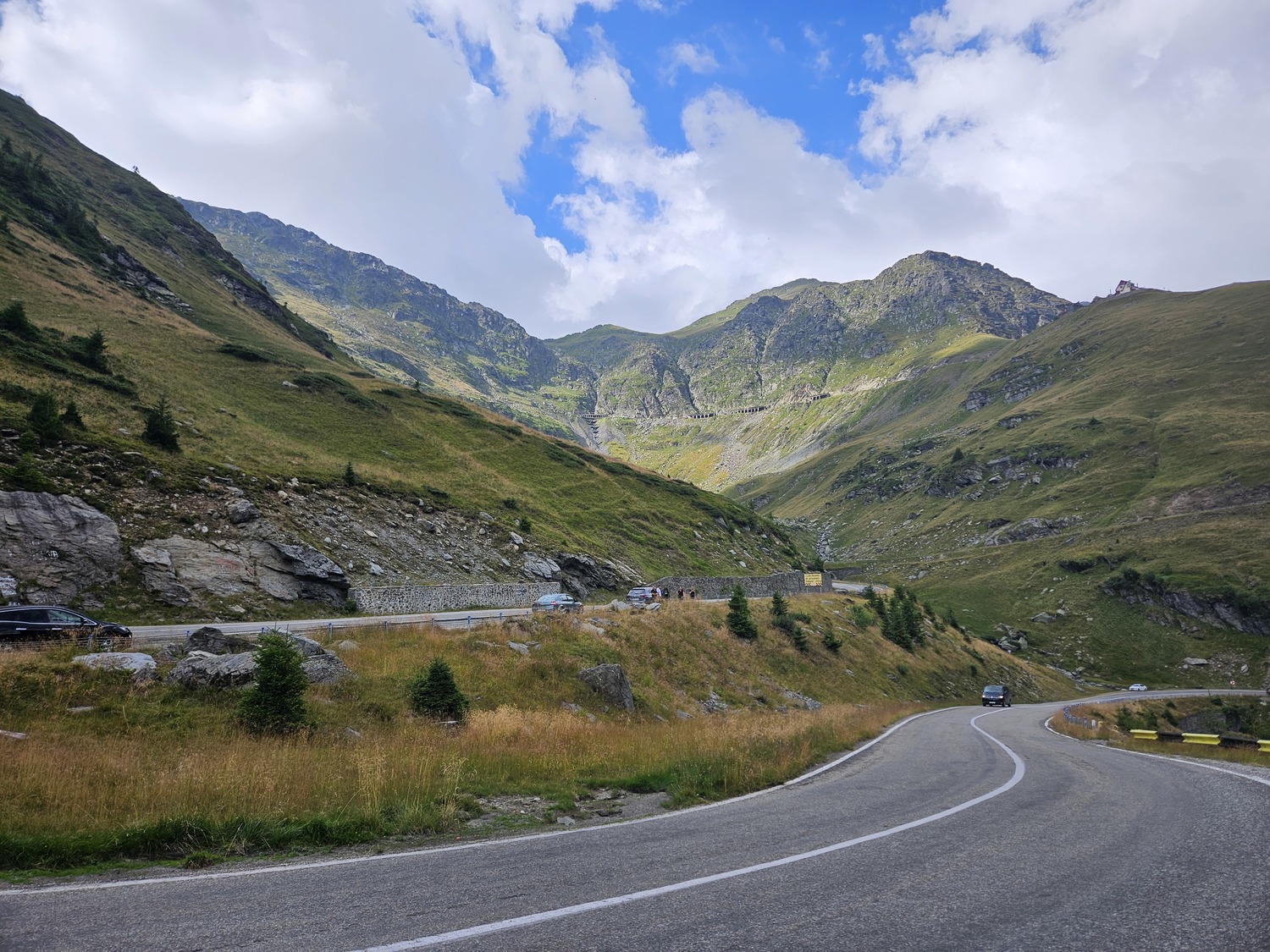
Transfagarasan road on the northern side of the Carpathian Mountains.
When ascending the Transfagarasan on the southern side, I would recommend stopping if there are fruit vendors. Homegrown fruits are unforgettable. We bought incredibly delicious old-variety peaches. They are juicy, meant for eating, not transporting. It's worth crossing the tunnel before noon. In the afternoon, there are big traffic jams.
What to See in Romania
Mountain ridges, peaks, small lakes, and waterfalls in the Romanian mountains. For those visiting Romania, it's a must to see live bears. It seems their numbers will increase along the roads as travelers feed them.
When driving along the Transfagarasan, stop by the Balea Lake. From here, take a few hours' hike towards Capra Lake. The route is accessible for seniors. From Capra Lake, additional hiking trails start, ranging from 3 to 5 hours.
Driving on the southern side, we encountered bears in about ten places. The bears posed for travelers, with old males and mothers with cubs.
Descending Transfagarasan, another beautiful stop is Balea Cascada. From here, you can enjoy views of the waterfalls. They may not be as impressive as those in Norway, but the view is still fantastic.
Balea Cascada has souvenir shops and snack vendors. There is also a small hotel with a captivating view. From here, a cable car goes up to Balea Lake.
Entertainment in Romania
In Romania, you can find both passive and extreme activities. There are unique salt mines, water parks, and zip-lining experiences. Several locations are near the city of Turda.
After descending from Transfagarasan, you can stay in the cities of Sibiu or Sebes. We are heading to Turda, where we will stay at the Cheile Turzii campsite. Cheile Turzii is a small park located in a gorge between mountain ranges. Here, there is a very long zip line (tyrolienne) about 600 meters long, with an elevation gain of about 100 meters, reaching speeds of around 100 kilometers per hour. Throughout the day, screams echo around the area.
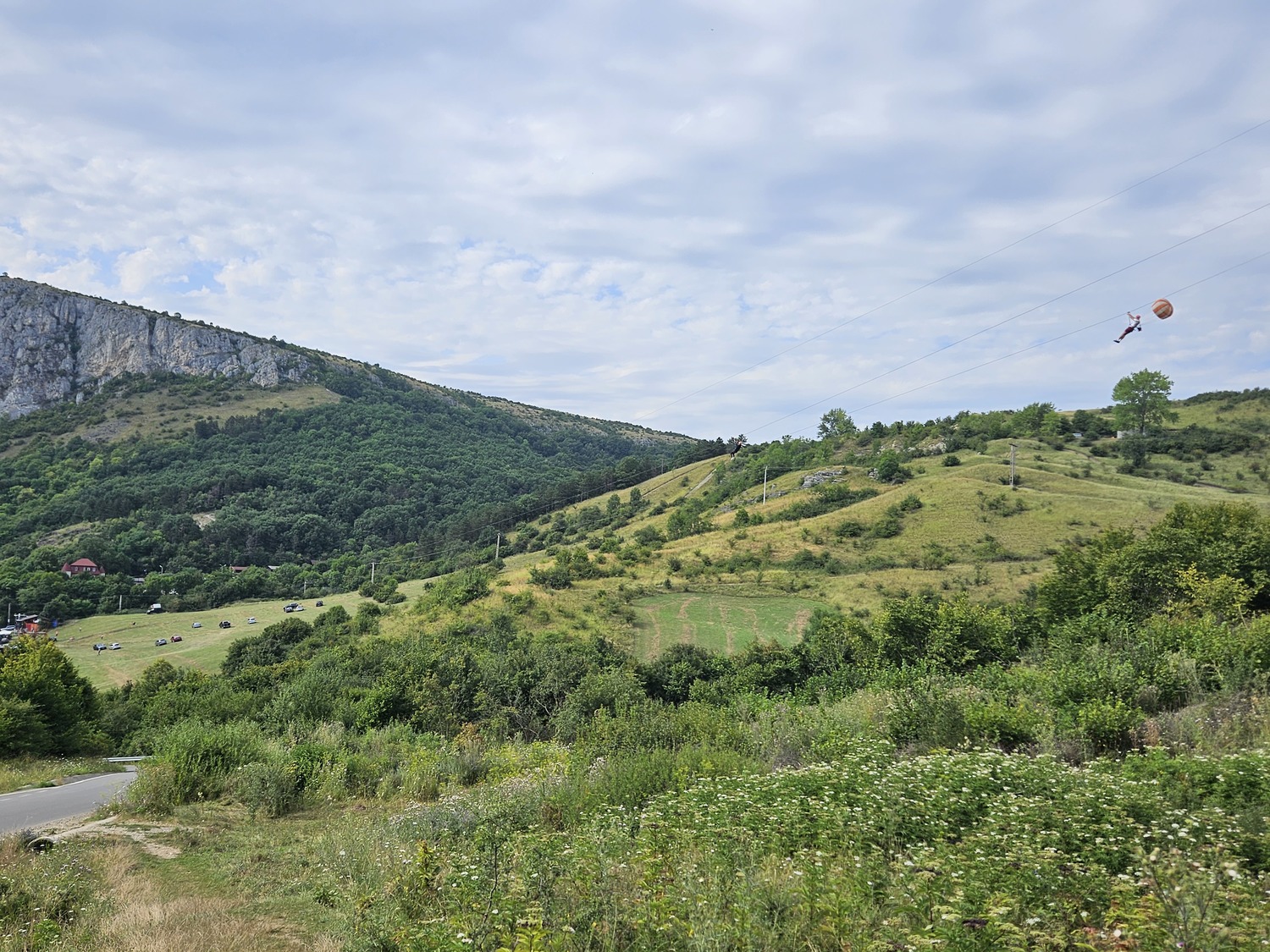
The zip line with a gliding descender. For those who are afraid or weigh more than 100 kilograms, a braking parachute is attached.
There are many hiking trails in the gorge along the stream and, later, longer trails leading up to the ridge. These trails are quite different from those in other National Parks. The entertainment zone is quite lively, with noise from the bars going on almost until midnight.
Near Turda, there is another valuable attraction, Salina Turda. These are centuries-old salt mines that have large shafts remaining. In the central hall, there is an entertainment complex with restaurants, tennis courts, and even a Ferris wheel. In an even deeper shaft, there is a lake where visitors can paddle in boats.
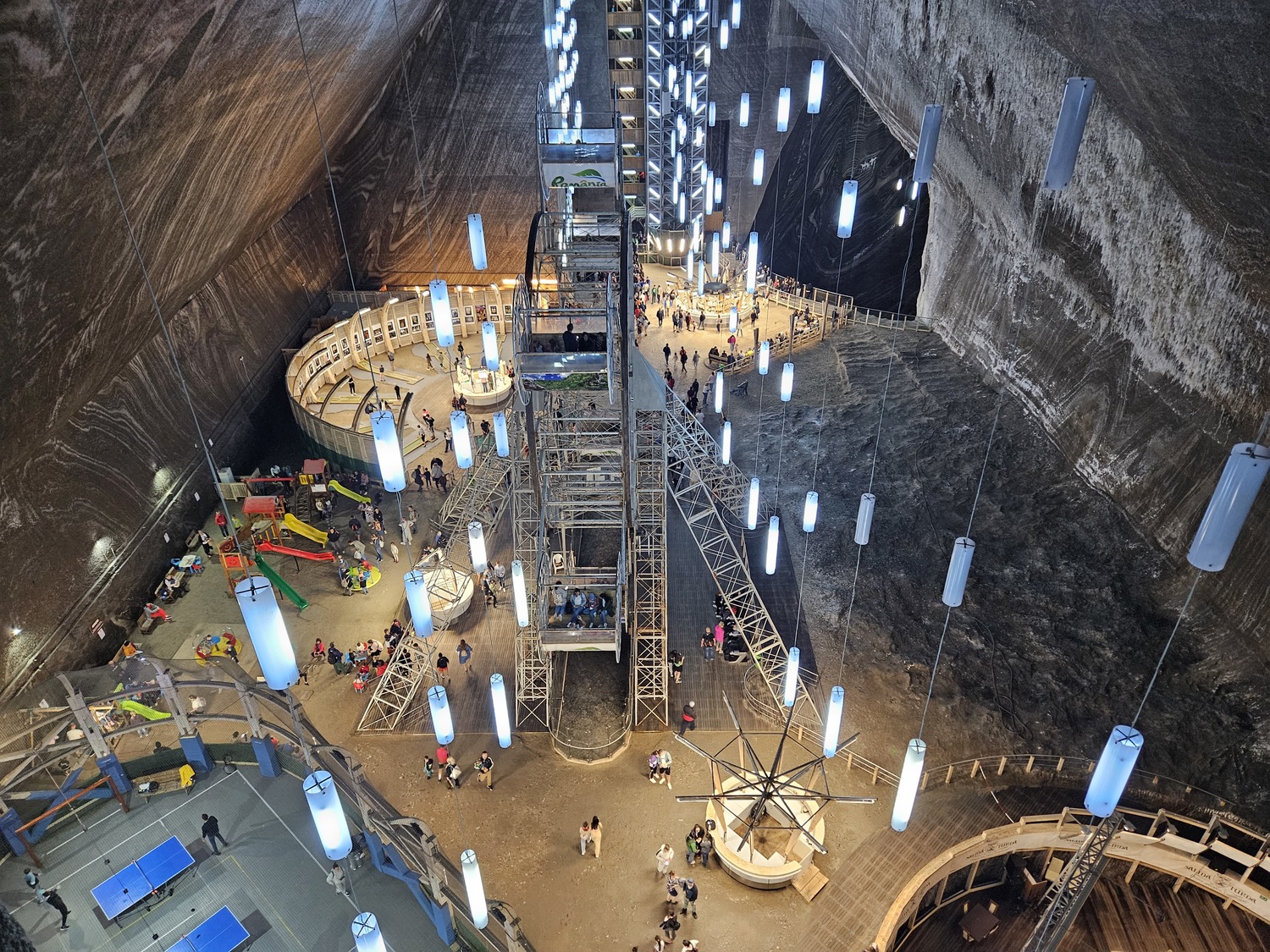
The central hall of Salina Turda can be reached by elevator or on foot. The adjacent shaft with the lake can also be accessed by stairs or elevator. During peak season, there can be long queues, so it's recommended to plan around 4 hours for a visit to Salina Turda.
The Most Beautiful Places in Romania
It would be difficult to choose the most beautiful place in Romania. Each of them has its charm and uniqueness. Transalpina, located not far from Transfagarasan, is quite different. We are driving back from Turda through it.
Transalpina is worth starting early in the morning. You reach it and stay overnight in the villages at the bottom. We stayed with very hospitable hosts in the village of Sugag at the Casa Zorilor hotel. Click on the safe, active link to choose this hotel or one nearby.
Transalpina, unlike Transfagarasan, is long. Once you ascend, you drive for a while through the alpine plateau. There are many viewpoints along the road offering breathtaking views. These spots are not only perfect for a five-star breakfast but also for cooling down the brakes. Even when braking with the engine (you need to descend in second or third gear), the brakes can still overheat. At Belvedere Transalpina, there are souvenir shops and a guesthouse. From here, you can also take a walk around the surroundings.
On the Transalpina road, you can find accommodation in the town of Rânca. From here, you can enjoy stunning mountain views, pleasant walks, and relaxing times in the inns. During winter, ski lifts are operational here.
What to Eat in Romania
In Romania, you must try meat dishes. The lamb and beef are of high quality, and the meals are delicious. The portion sizes are large, and the prices are reasonable.
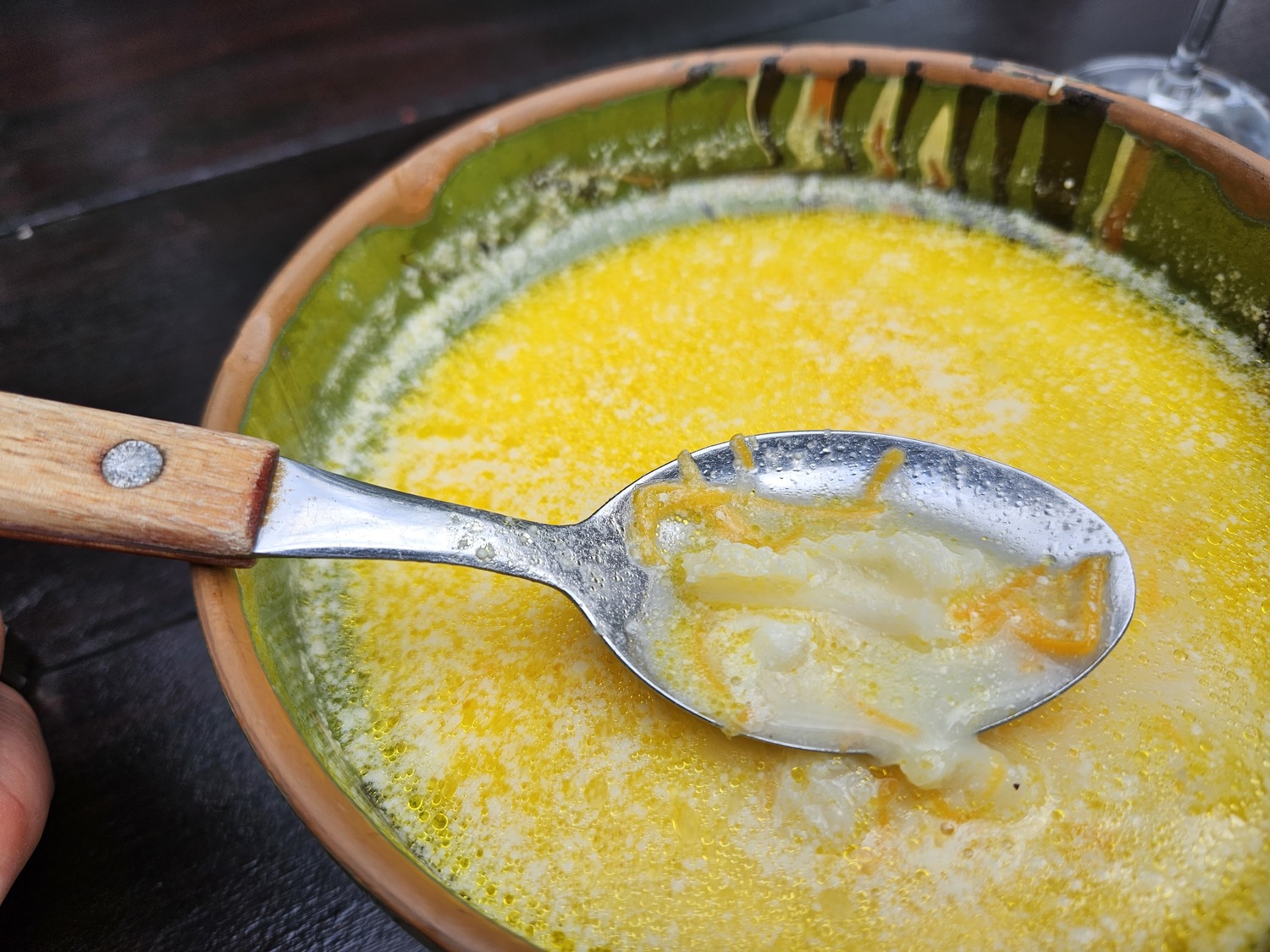
A very interesting soup with pieces of intestine. The taste is very similar to squid soup.
Fruits should be bought from roadside vendors, as they sell local produce. The peaches, tomatoes, and apricots are very delicious. In stores or large kiosks, imported fruits are sold, which are meant for transportation, not for tasty eating.
Reviews from a Trip to Romania
A trip to Romania exceeds expectations for many. The beautiful nature, hospitable people, and excellent infrastructure for travelers are impressive. I have never met such polite drivers as those in Romania.
The prices are not the lowest, but they are lower than in Lithuania. You can have a hearty and high-quality lunch for 15 euros.
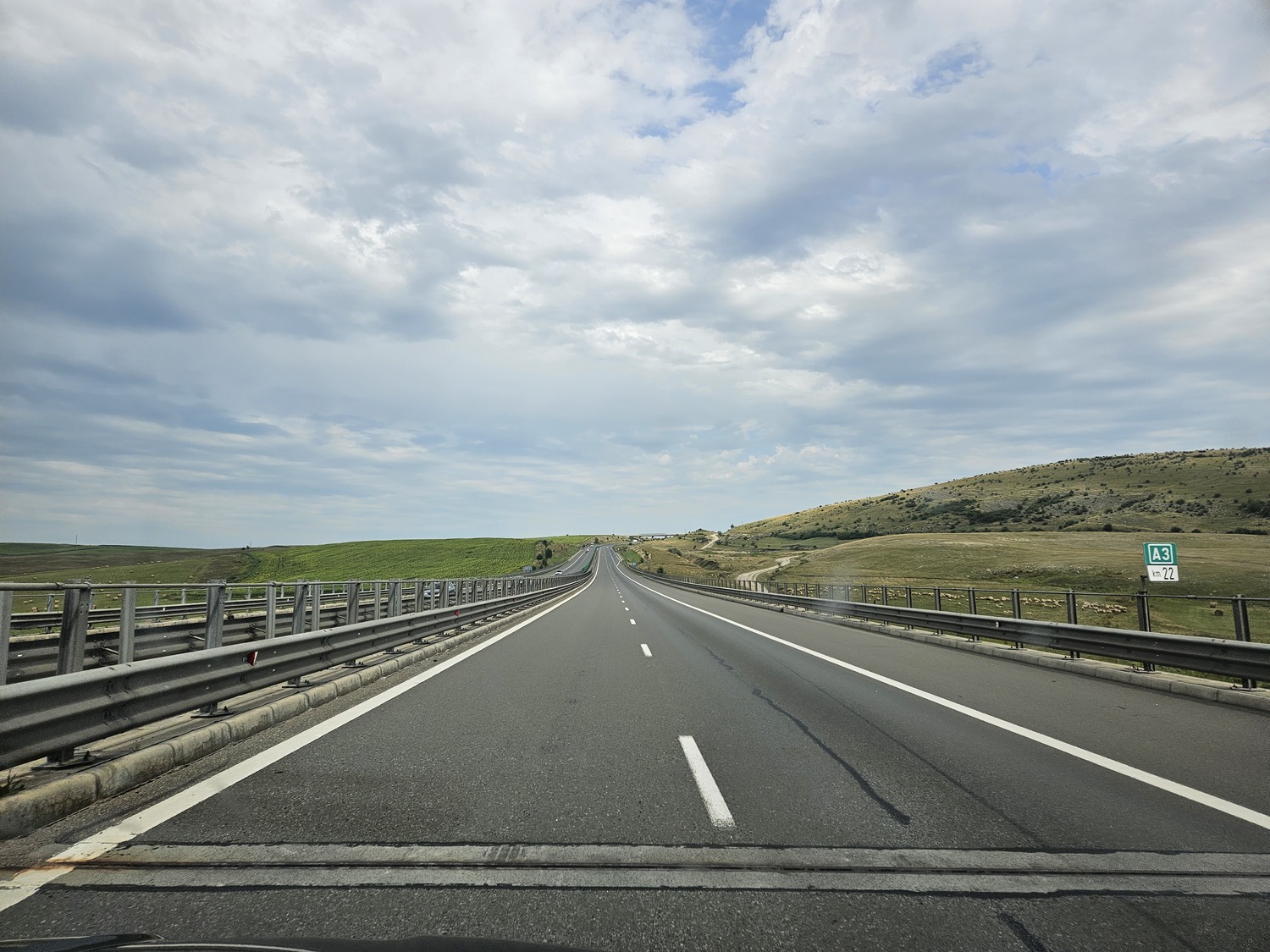
Roads in Romania are quite good and can be expected to be in a nice condition almost everywhere in Romania. There are also highways in four directions.
Map of Romania Trip: Must-See and Useful Locations. Hotels with the Most Beautiful Views.
What to see in Umbria?
Monuments, restaurants and local foods
How to enjoy Clermont-Ferrand
Clermont-Ferrnad, located in Auvergne a green and peaceful region, is the perfect place if you want to discover France in an unusual way.
Morocco by car
Morocco by car. The full itinerary of a car trip in Morocco.
Road trip: 15 days accross Europe
Go through 4 different countries and visit new places, cultures and ways of life in a 12 days road trip accross Europe.

